Twitter Spaces With Sommelier: Community Update on the First Cellars to Launch
On December 15, Sommelier co-founders Taariq Lewis and Zaki Manian gathered with team members, Unique Divine and Sunand Raghupathi, to share some great momentum news with the community. Thanks to our community members on Telegram who have been LPing for Pairings for ridiculously high gas prices, and also to everybody on our Discord and who participated in the community.sommelier.finance in the discussion of first proposals.
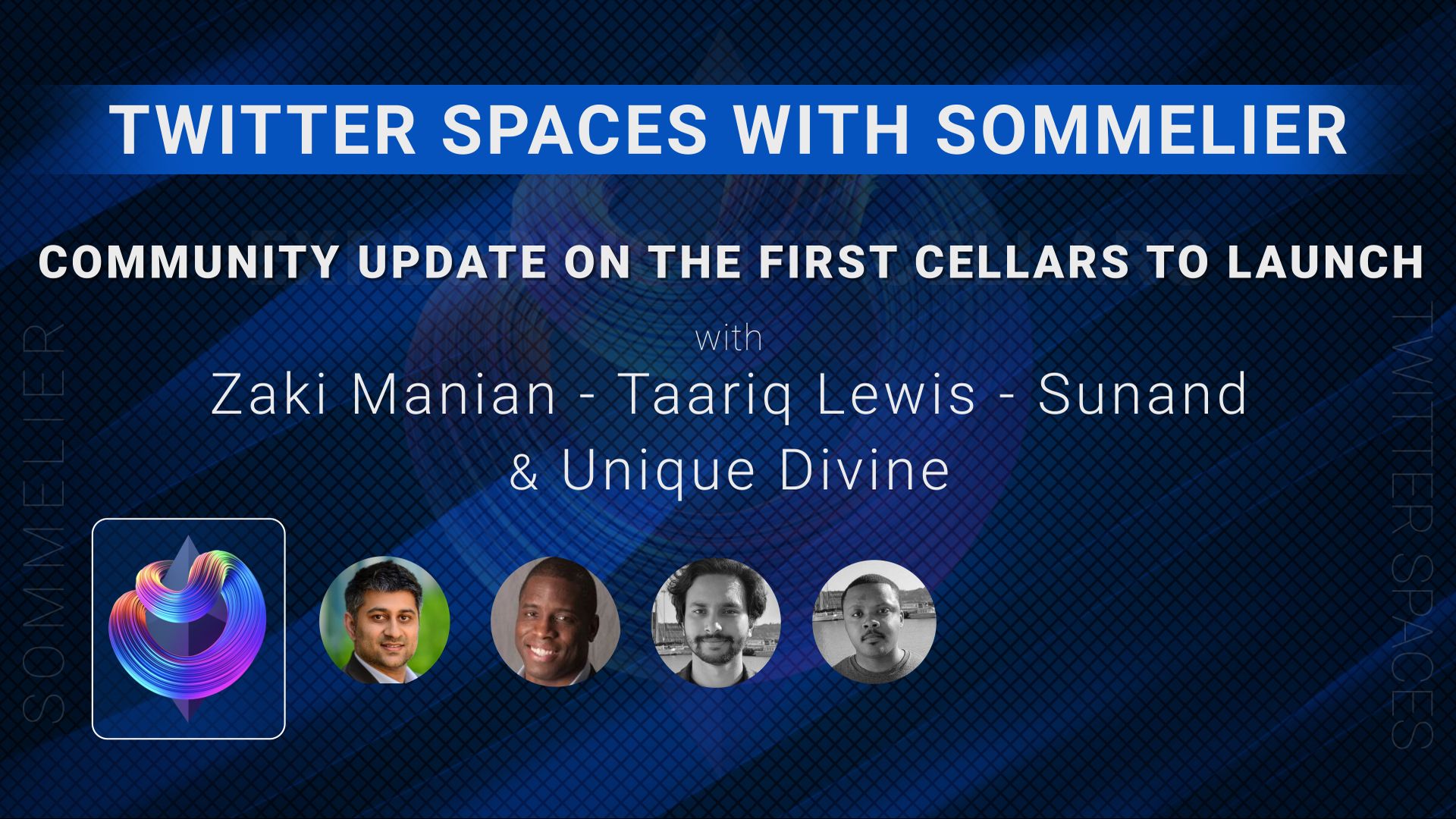
Community Update: Sommelier Cellars Launch Momentum!
Taariq kicks off the discussion with “How are you doing, Zaki?” and the flow begins:
“I’m doing great. It is a Wednesday morning, the last working Wednesday of the year. We are doing a lot of community chats on Wednesday, as one does. I also wanted to briefly address that we had talked about actually executing the airdrop today. Where we are is we have made most of the updates to the Gravity bridge that we want to but we’re still working on what we call Steward, which is the data pipeline for the validators, and it’s coming together and it’s almost ready, but it’s not ready today.The first Cellar that we’re talking about today will actually run on top of that. Our goal has been to launch the Cellar and the [SOMM] airdrop at the same time. We’re going to punt to January but that’s still our plan.”
“That’s awesome,” says Taariq, who notes that the protocol team has done a massive amount of work in the upgrade of the Gravity bridge.
Gravity bridge upgrades
Zaki describes the biggest changes that the team has made to the Gravity bridge.
“We did two things. One is: Some of you know that our closest cousin for it, the Althea Gravity bridge, launched on Monday, so they open sourced a whole bunch of code last week that we actually pulled in. And, so, they had a bunch of clever gas-saving stuff that they had done that we had to bring in. So we brought all of that in. And they changed some user stuff around the ERC-20 so it became a much more clever way than we had been planning to make the supply of tokens match the bridged amount, which is really cool. So, we brought all of that in.
“One of the things that we anticipate doing more, I think, than the Althea bridge group is we do imagine that we will probably be shipping future updates to our core bridge contract. So, we wanted to put in plumbing so that the SOMM ERC-20 token can actually migrate to a new Gravity bridge in the future when we want to release a new update. So, those updates are all in. But, I’m also just not a big fan of doing major software updates right before the holidays. But, we’re hard at work right now focusing on Steward, and getting Steward up and running and ready for the validators to use.”
Sommelier will be organizing a validator event sometime in January. Taariq says:
“So, if you’re a validator and are interested, just again, engage with us on Telegram or Discord because we are going to be talking some more to validators and making sure they understand the software and a lot of what’s coming in the upgrade.Thank you to Zaki and the team.”
Speaking of Cellars
Switching gears from protocol updates, Taariq engages Sun and Unique about Sommelier Cellars.
“Now that the Gravity bridge is going to be upgraded, folks are going to be getting ready for Sommelier Cellars and everybody’s asking: well what does that look like, what’s going to happen to Cellars, how do they work? And I thought we could start this conversation talking a little bit about Uniswap v3, and where we are. Sommelier has been an early team on Uniswap v3, launching the subgraph for Uniswap with Kevin and team. A lot of time has passed since those early days in May. And I’m curious, Sun and Unique, if you could talk about your view of Uniswap today and what’s happening with AMM in that DEX since you guys have been spending time on it.” Sun jumps in:
“I can say my view of Uniswap is that it’s this really interesting, complex playground for developing strategies. I don’t think it gets harder than this. We’ll talk more about what that means, the complexity and how hard it is, but it’s a really challenging problem and it’s challenging on a bunch of levels, so there’s data level, impermanent loss--which we can talk about--but for me, I’ve spent a lot of time on it, but I’m learning new things every day and it’s still challenging.”
Taariq picks up on the hard problem and notes: “Zaki always says we should always pursue the hardest and harder problems. Zaki, do you still agree that Uniswap is a hard problem and that it’s interesting because of that?”
“Yeah, I think concentrated liquidity and how to LP on concentrated liquidity still represents one of the hardest problems in the space.”
“So, Sun and Unique,” Taariq continues, “since we’ve talked about it’s a hard problem and I’m an LP, my basic question is: “I want to know can I make money on this thing?” I see that Uniswap is pulling in $3-to-$4 billion in liquidity or volume, how do I get a handle on profitability?”
LP Profitability on Concentrated Liquidity
Zaki says he thinks that “one of the things that is most significant that we’ve observed is that the increases in TVL in Uniswap v3 are mostly coming from Uniswap’s introduction of a one basis point fee tier. They initially launched with a three basis point fee tier, and they released this one basis point fee tier, which has become very popular for a certain set, mostly of stablecoins and it’s undercutting essentially Curves’ trading costs. And so, I think that has become the most successful product launch and thing for Uniswap v3, but it’s actually kind of not super relevant to what we do so I’d just like to point that out.”
His point is well received. Taariq thanks Zaki for the Alpha and says: “We can go pursue some of these pools. So for the bigger pools, like USDC ETH and maybe even some others. Sun and Unique, can I make money in these pools? Is it easy as 1-2-3 or is there more to it? Unique dives in:
“Let’s say what you probably want to look for is a pool that still has high volume but has a lower TVL. Because, with concentrated liquidity, you’re competing against all of the other people that are LPing. So if there’s less active liquidity, you’re providing more of the proportion at a given price range, so that’s really what you really want to look for. For example, the USDC ETH, although that pool has high TVL and high volume, you're competing against so many other people it may not be as profitable as maybe the 9th ranked TVL or the 10th ranked TVL.”
Taariq summarizes the point that even today, all you’ve got to do is look for low TVL and high volume as possibly the best opportunity to capture the most possible fee revenue. He asks if this is a constantly moving target or if it is usually stable for most of the pools that the team has seen. Unique continues:
“Yes, that’s definitely a moving target. That’s only one side of this. Right, so, you would want to look at the liquidity distribution of where people are also currently providing liquidity and maybe see how you feel about how the price movements or volatility plays into where there’s a dip in liquidity and if you want to fill that gap.”
Let’s break this down
Taariq probes to break down the LP opportunity Unique just introduced:
“So, let’s assume I have my wife’s Christmas gift, and that I’m going to use that money to do some LPing. What is it like to think through all these steps with somebody that has, say, $5,000 or $10,000? A lot of our LP users are in that range on Pairings today. What is required to get that information? Do we do some data mining or do I look at DeFi pulse or some other metric. What do you guys do to understand what that looks like?” Sun continues the discussion:
“Let me just jump in and give perhaps a bolder answer to that question, which is that as an individual user, it is very likely that you cannot make money on Uniswap v3 by yourself.”
Taariq exclaims: “Why you gonna be the Grinch? Don’t be a Grinch!”
Sun goes on to justify:
“There’s a paper last month from the Banker team and Topaz Blue, and they essentially studied all of the Uniswap v3 positions historically and measured them with respect to impermanent loss. So, the question is: After accounting for impermanent loss, how many of these positions were actually profitable? And it turns out that roughly half of them actually lost money. So, you’re providing liquidity and you lose money when you account for impermanent loss. And so the question is, ok the half that didn’t make money was there anything that they did that is easy for someone to do to beat impermanent loss? And, the answer is ‘no.’ So, you can look at things like duration of the position, time in market vs. timing the market. No correlation there. It’s like THANOS, indiscriminately wiping out half of the positions. So, to answer your question, this is what makes it hard. It’s really this question of impermanent loss. As a user, who just wants to market make, provide liquidity and then forget about it. Very likely the answer is you cannot make money doing that. Right? That’s what Cellars are for.”
Taariq wants to know what the team is doing to save LPs like him from losing his small piece of pie--and his wife’s Christmas money--in Uniswap land? Sun continues:
“What we’re doing is getting in the tank and studying this problem of impermanent loss and how we can beat it. This is still very much a research question. I can’t say that there is just an objective, guaranteed way of beating it, but this is what strategies are for. And it seems like this kind of deep dive, doing analysis, modeling, and really studying the problem for a lot of time is what’s required for successfully providing liquidity. So that’s what we’re doing. That’s our job. It’s to study this problem and we’re focused on it, and we’ve been focused on it. We do that so our users don’t have to.”
Getting Deep on the Analysis
Sun describes some of the things his team dived into for their analysis.
“One is to have a history of all of the times that liquidity was added or decreased, and then vswaps, so that we can run historical back tests. So, when we’re going to have a strategy that’s proposed, it usually means that we’ve gone across different time intervals and actually seen how many fees does this collect and then what is the impermanent loss. The challenge of impermanent loss is that as an LP, whenever a price moves off of spot in your position, you’re always buying the asset that’s dropping in value and selling the asset that’s rising, so you’re losing money on both sides. And, regardless of whether the price goes up or down in a pair, you’re losing out if it’s going away from the middle in terms of impermanent loss.
“So, what are all the ways you lose money: You have your gas fees and an aisle. And, all the ways you make money are from swap fees. So, it’s really a game of finding when there’s going to be a lot of swaps in a place that you can provide a large proportion of active liquidity. And so, basically we’re just finding ways to predict volume, predict volatility, things like that so we can run historical back tests and find something that looks profitable when running in the future.”
Are we all chasing the same approach? Sun sees this from a research perspective:
“I think this is very much a research problem and so there’s no one who has a concrete solution, at least on the Uniswap side. I mean there’s protocols like Bankcor trying to provide impermanent loss protection. But, as a research problem, we’re all searching for the holy grail here. Game of Strategies does a ton of work on this. I wouldn’t say we have a radically different perspective. We’re just all trying to solve the same problem here.”
Does the first proposed Sommelier Cellar improve over time? Is that Cellar worth one shot, “as is”? Does this research allow you to continuously improve the vaults as time passes?
“Yes,” says Sun. “Cellars will certainly improve over time.”
So, LPs can join other LPs in a SOMM Cellar/vault and depend on our team efforts to continue to find ways to make or improve our ability to capture fees.
Liquidity Mining’s Appeal
Liquidity mining also seems to make it very attractive to join Uniswap v3. Sun observes that his team has also looked at how liquidity mining and how it may affect the performance of the LP in a particular pool on Uniswap v3.
“The Ponzis are interesting and they’re exciting. In the space as an LP you have to learn to read APYs that are cited to you. So, one thing that Uniswap v3 is not going to Ponzi around, there’s no liquidity mining incentive natively, and there’s pros and cons of that. The con from an LP perspective maybe is that it’s less sexy. The APYs are not as wild. But, this was clearly a deliberate decision and there’s arguments that it’s better for long-term viability. So, it’s just something to keep in mind. You’re not going to see $4,000 in APY on a Uniswap pool but when you see that number elsewhere…”
Cellars Preparing to Launch
Zaki observes what the Cellars team has ready for launch as Sommelier prepares to have Cellars come online:
“I think what we have is a very exciting technology demo. One of the things that we have hypothesized is that dynamic rebalancing Uniswap v3 is a really good use case for our core infrastructure technology. So, we’re going to be ready to put that in production. We have other cellars that I think are a little bit safer that we have been contemplating and are coming down the pike in the future.”
So, let the conveyor belt of Cellars coming from Sommelier roll. Choices: that’s what good Sommeliers do.
Taariq encourages the community to please take a look at the SIPs proposals for the SOMM airdrop. “Like Zaki said, we’re doing work to get that ready and a lot of other improvements on the protocol so that is all going to launch.”.
Curious about what Cellar the team is going to launch on Uniswap v3 first? You’re just going to have to wait and see. Meanwhile, we encourage the community to come talk with Sun and Unique in the Telegram or on Discord. And, definitely check community.sommelier.finance where currently you’ll see the SIPs proposals up for airdrop and other distribution. If you want to learn about coin launches, check out our blog Sommelier.finance/blog. The SOMM token is live.
Have a great week and Happy Holidays!
More articles

Is Speculation Killing Crypto’s Future?

Sommelier's Path Forward: Embracing Revenue Over Narrative

Sommelier January Update
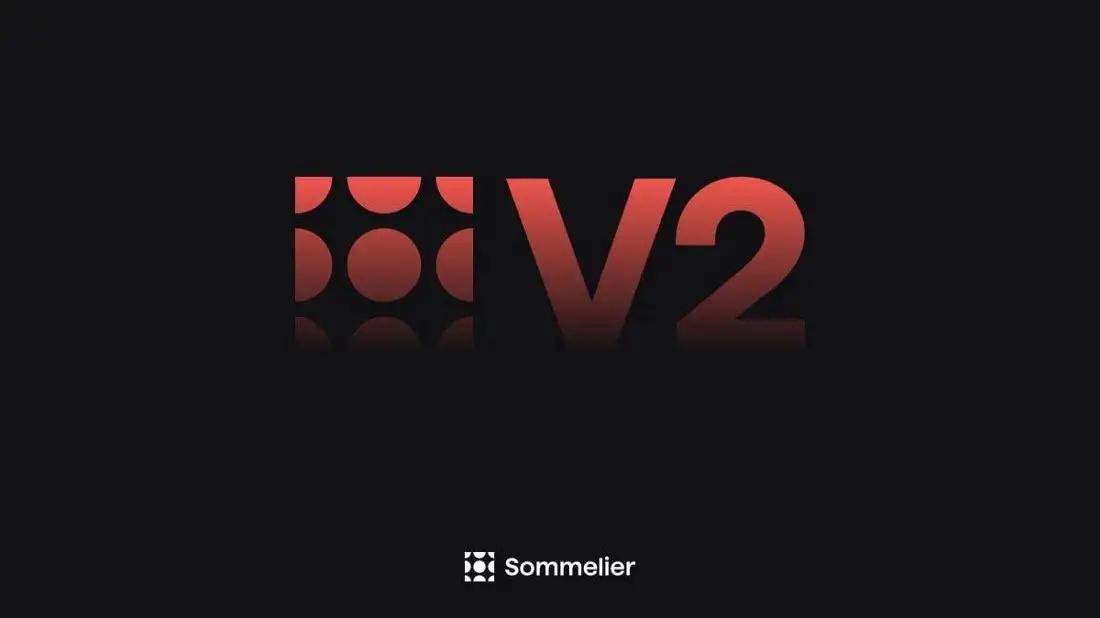
Sommelier Upgrades Cellar Architecture to Enable the Most Powerful DeFi Strategies in the Market

Real Yield USD is Coming to Maximize Stablecoin Yield

Retrospective on 2022 and the Journey Ahead

FAQ - Patache Digital’s Steady Strategies
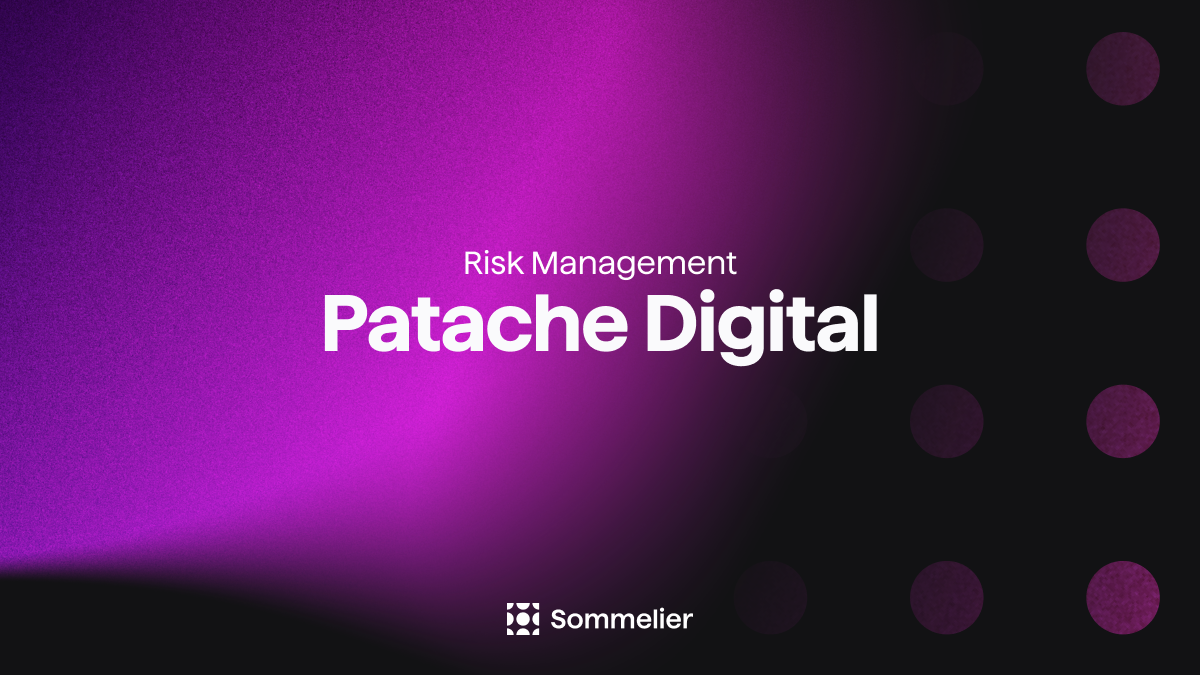
Patache Digital: Risk Management Discussion

Strategy Deep Dive: Patache Digital
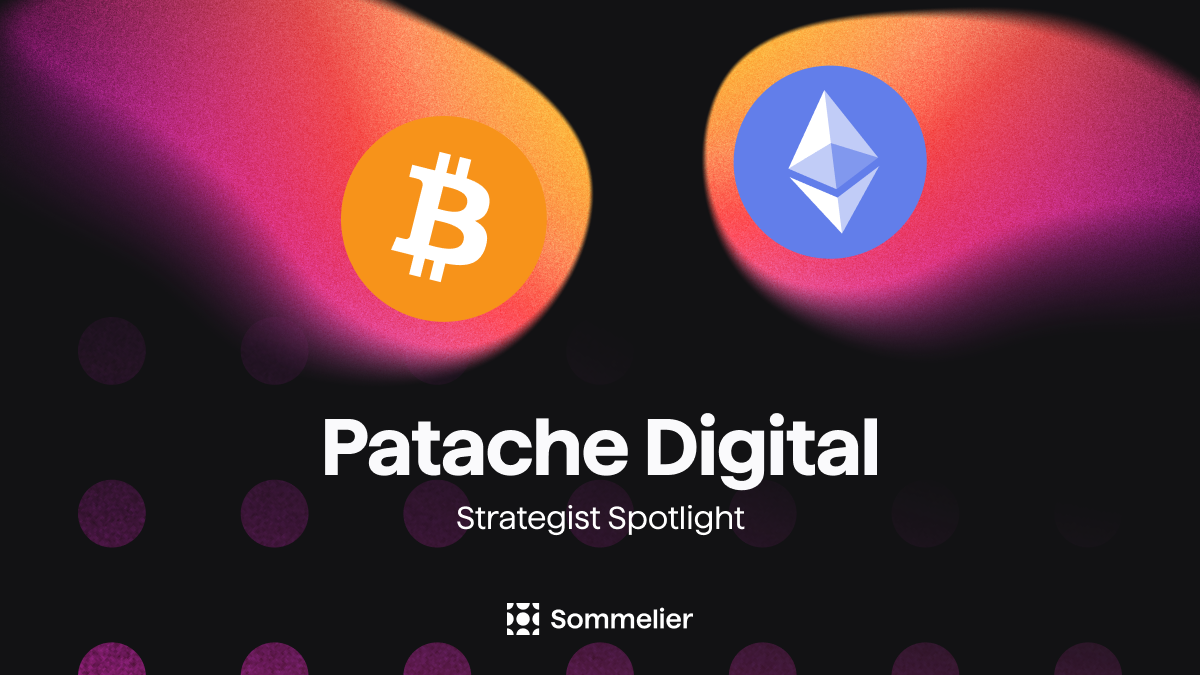
Strategy Provider Spotlight: Patache Digital

User Guide: How to Participate in Strategies on Sommelier

Sommelier Ambassador Program
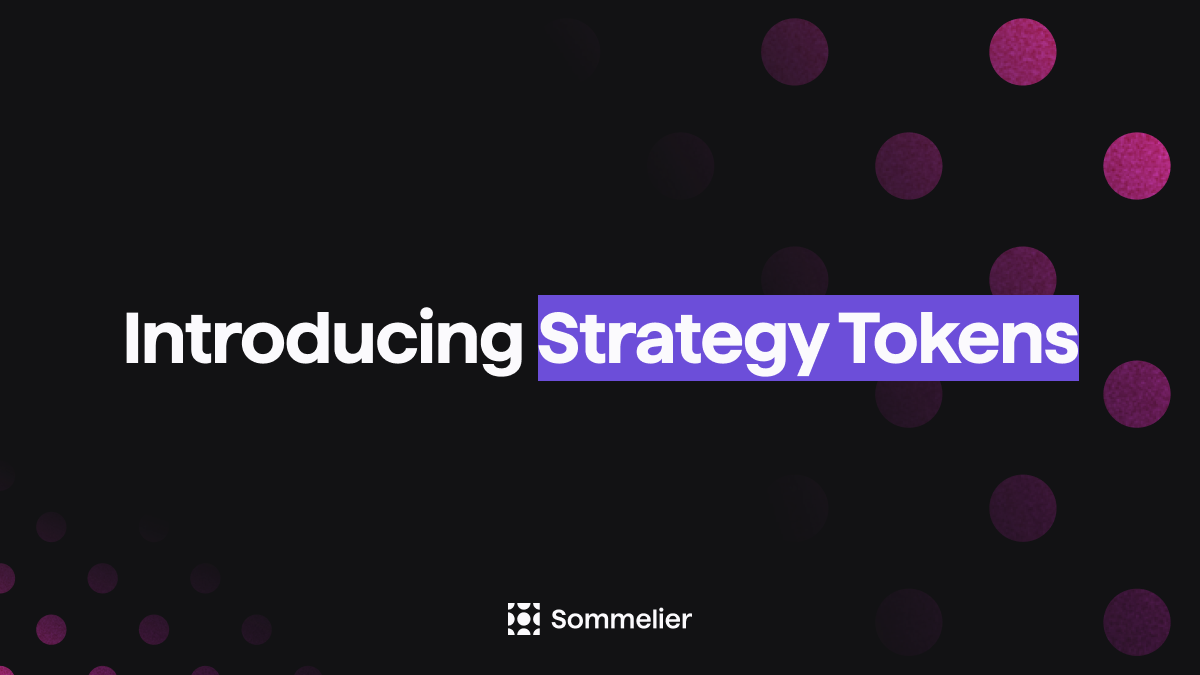
Strategy Tokens: What Are They and How Do They Work?

6 Core Principles of Sommelier

10/10/22 - Deep Dive on Cleargate Backtesting

Strategy Provider Spotlight: Seven Seas

Deep Dive on Trend and Momentum Strategies

Strategy Provider Spotlight: ClearGate

Supporting Strategy Providers on Sommelier
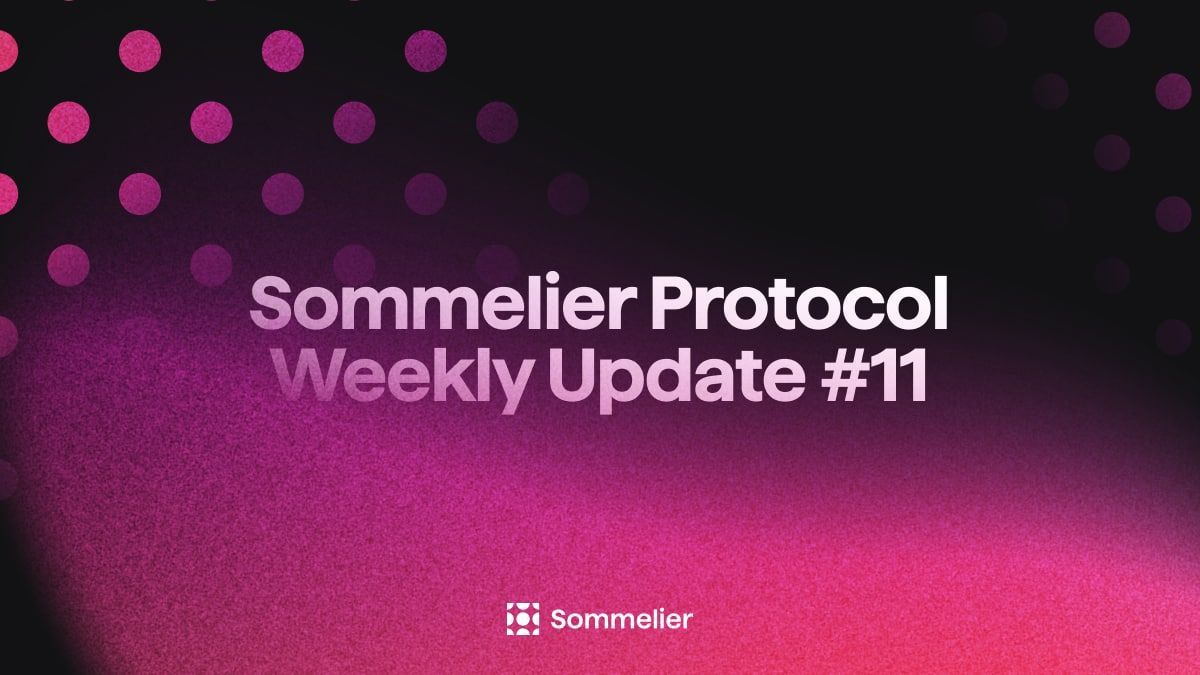
Sommelier Protocol Team Weekly Update #11

ELI-5 Explanation of the Data Science behind Sommelier’s First Aave Cellar

Sommelier Protocol Team Weekly Update #10
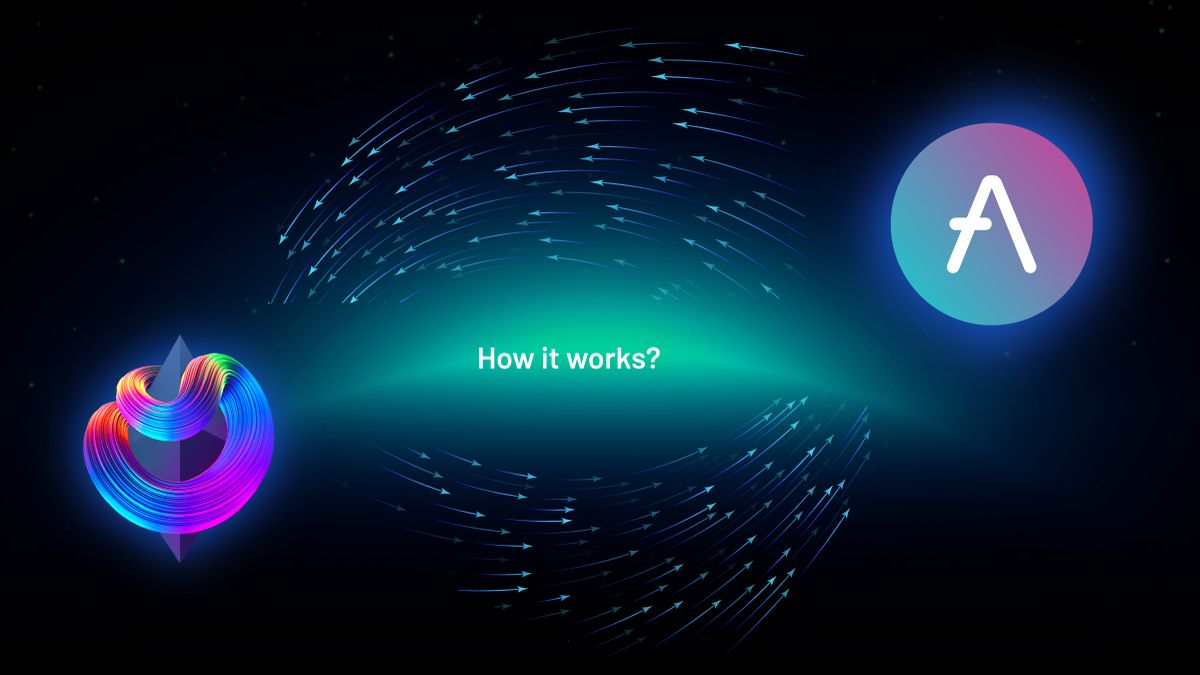
The Data Science Behind Sommelier’s First Aave Cellar
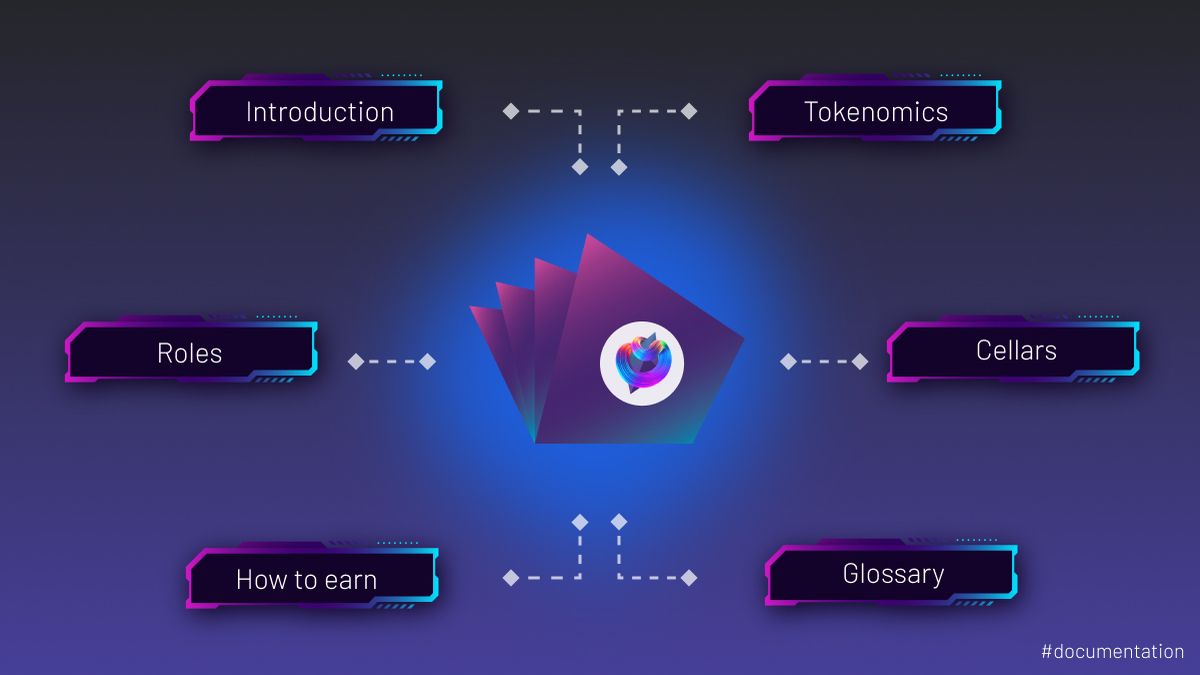
Sommelier Protocol Design Documents

Sommelier Protocol Team Weekly Update #9

Sommelier Protocol Team Weekly Update #8

Sommelier Protocol Team Weekly Update #7

Twitter Spaces With Sommelier: How to Launch a Cellar on Sommelier

Twitter Spaces With Sommelier: Protocol Upgrade and Community Update

Sommelier Protocol Team Weekly Update #4
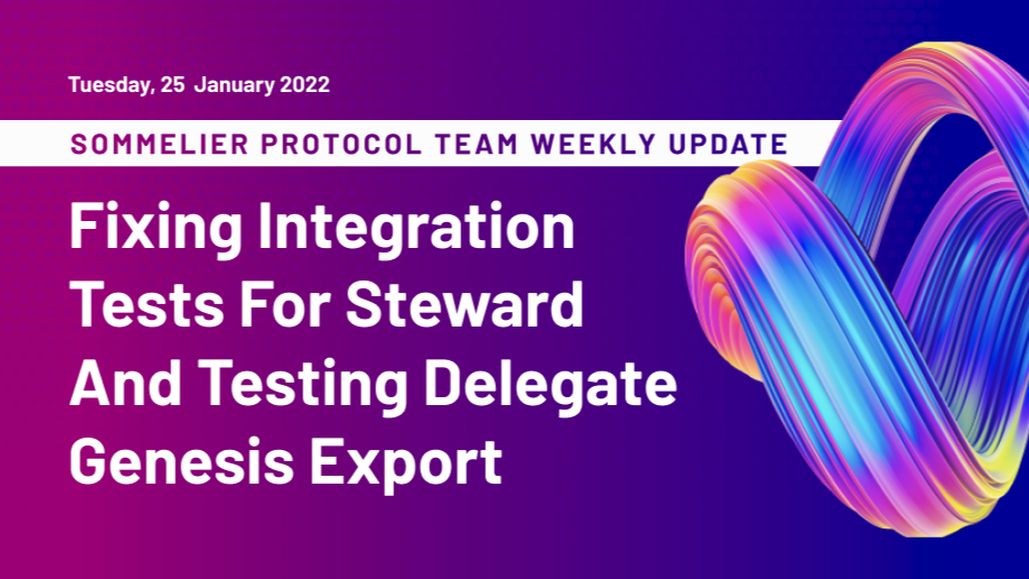
Sommelier Protocol Team Weekly Update #6
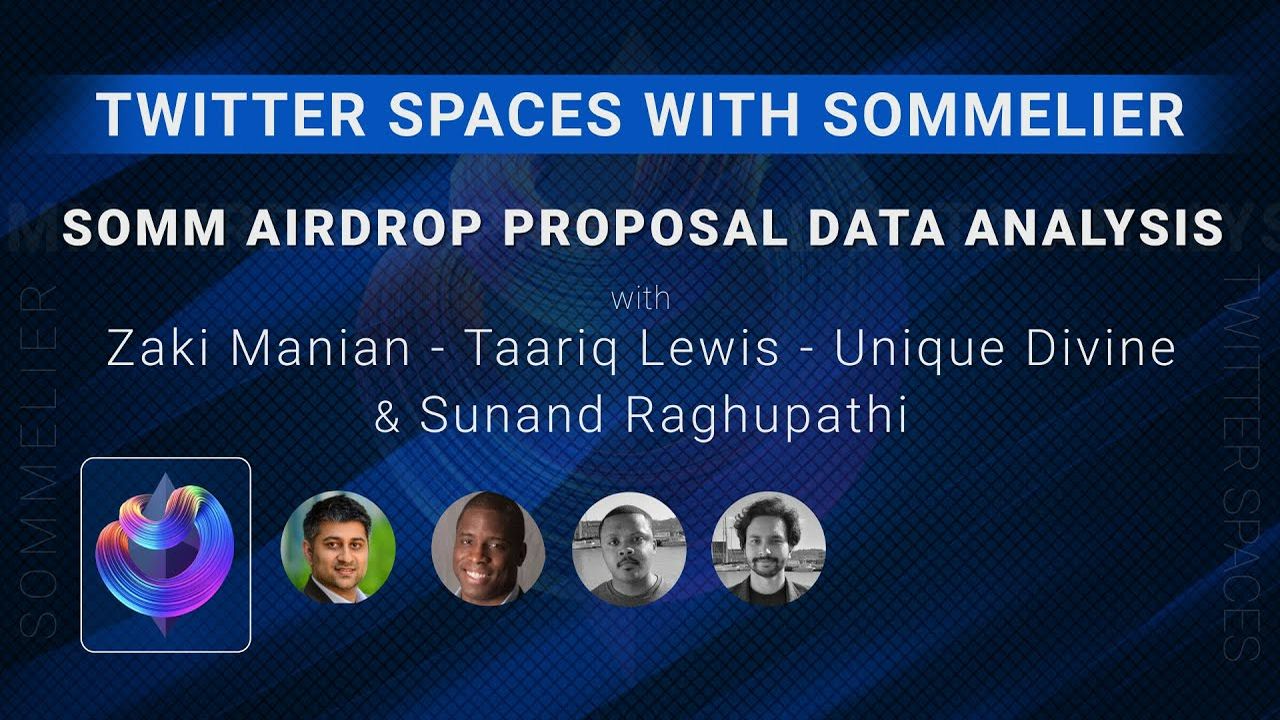
Twitter Spaces With Sommelier: SOMM Airdrop Proposal Data Analysis

Twitter Spaces With Sommelier: Community Update on the First Cellars to Launch
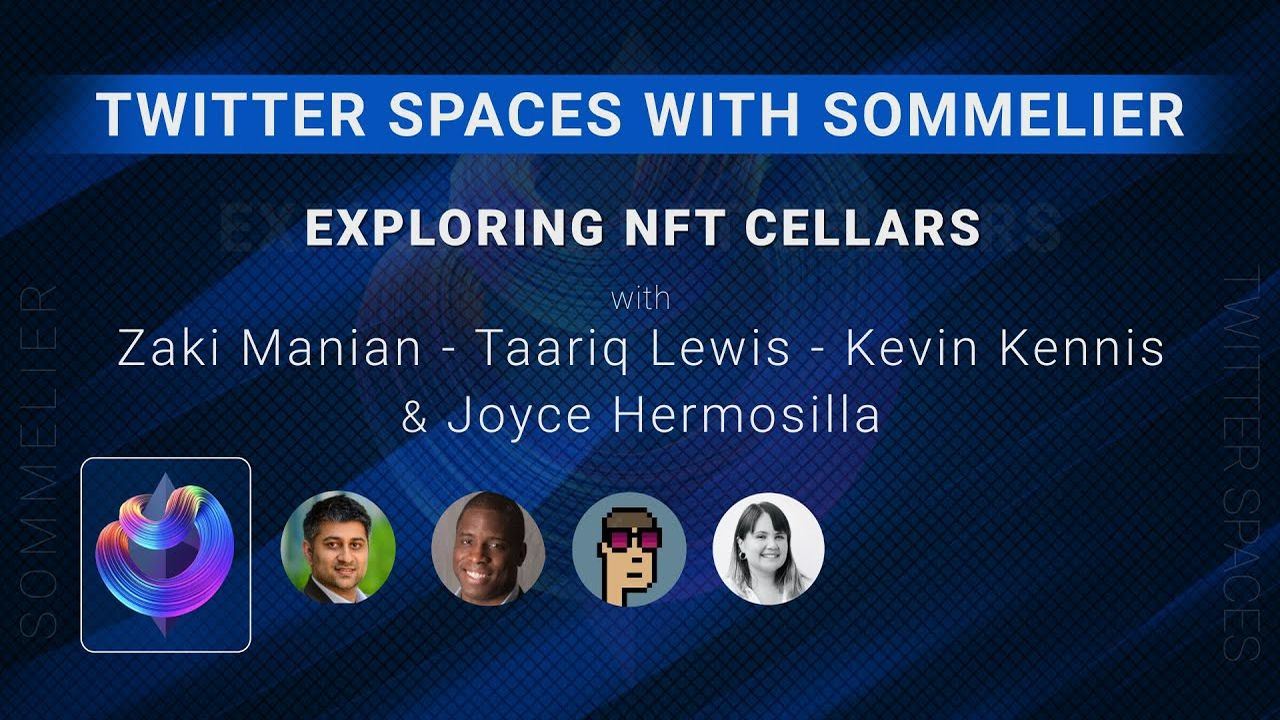
Twitter Spaces With Sommelier: Exploring NFT Cellars

Sommelier Protocol Team Weekly Update #1
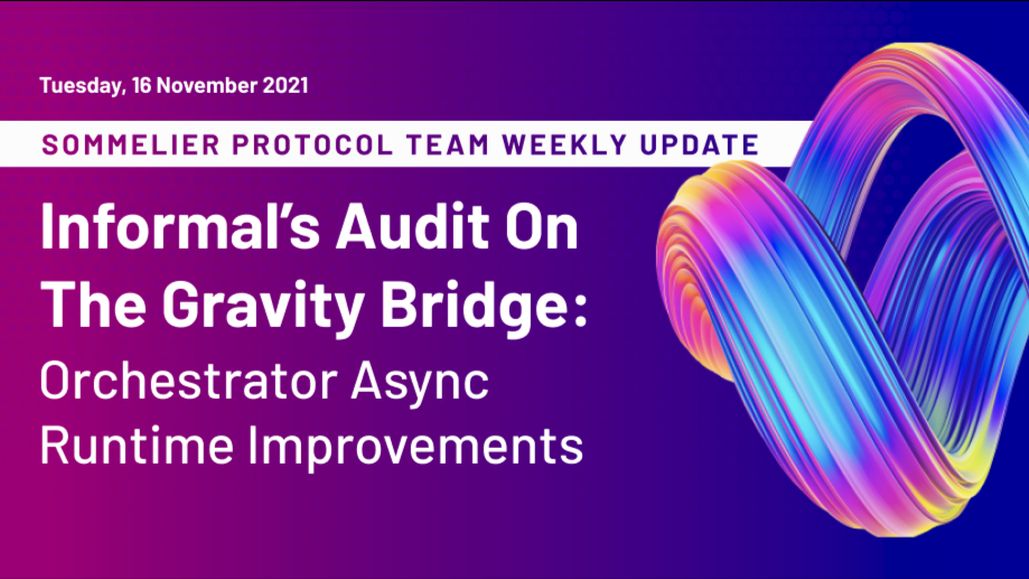
Sommelier Protocol Team Weekly Update #2
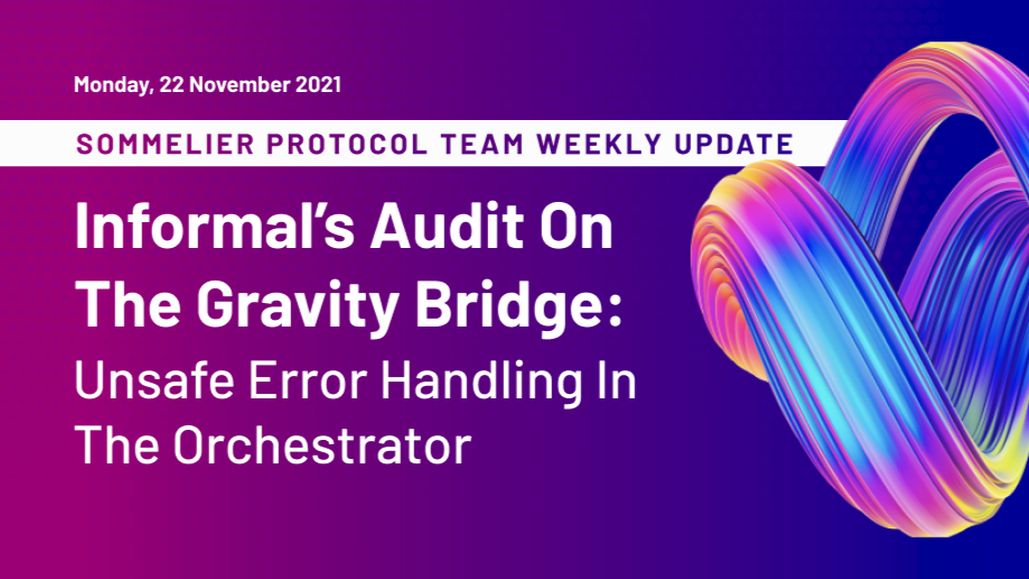
Sommelier Protocol Team Weekly Update #3

Three Things You Need to Know About Sommelier Governance This Week
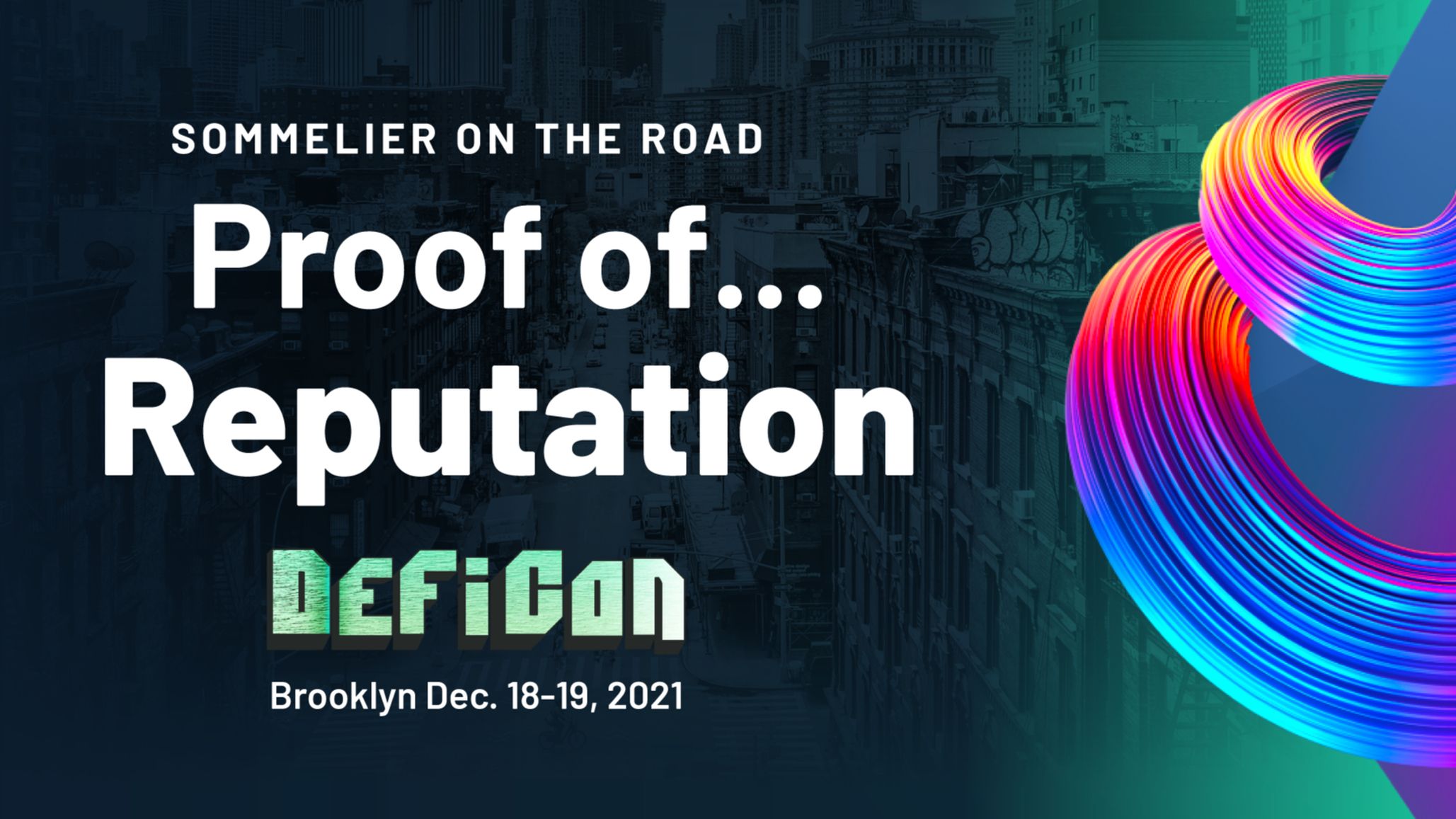
Sommelier On the Road: PROOF OF…REPUTATION
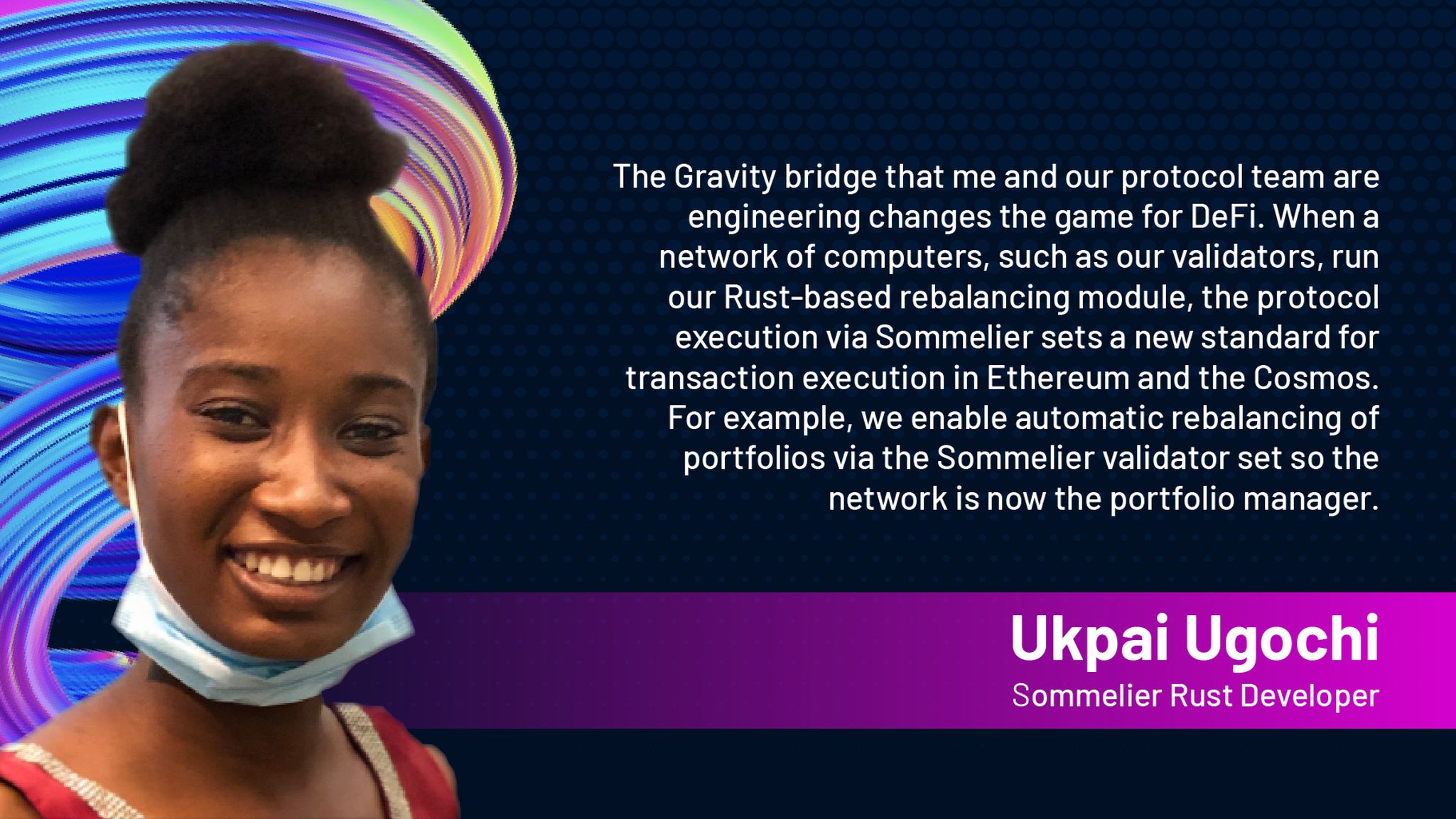
Introducing Ukpai Ugochi - Working on The Sommelier Cellars Rebalancer
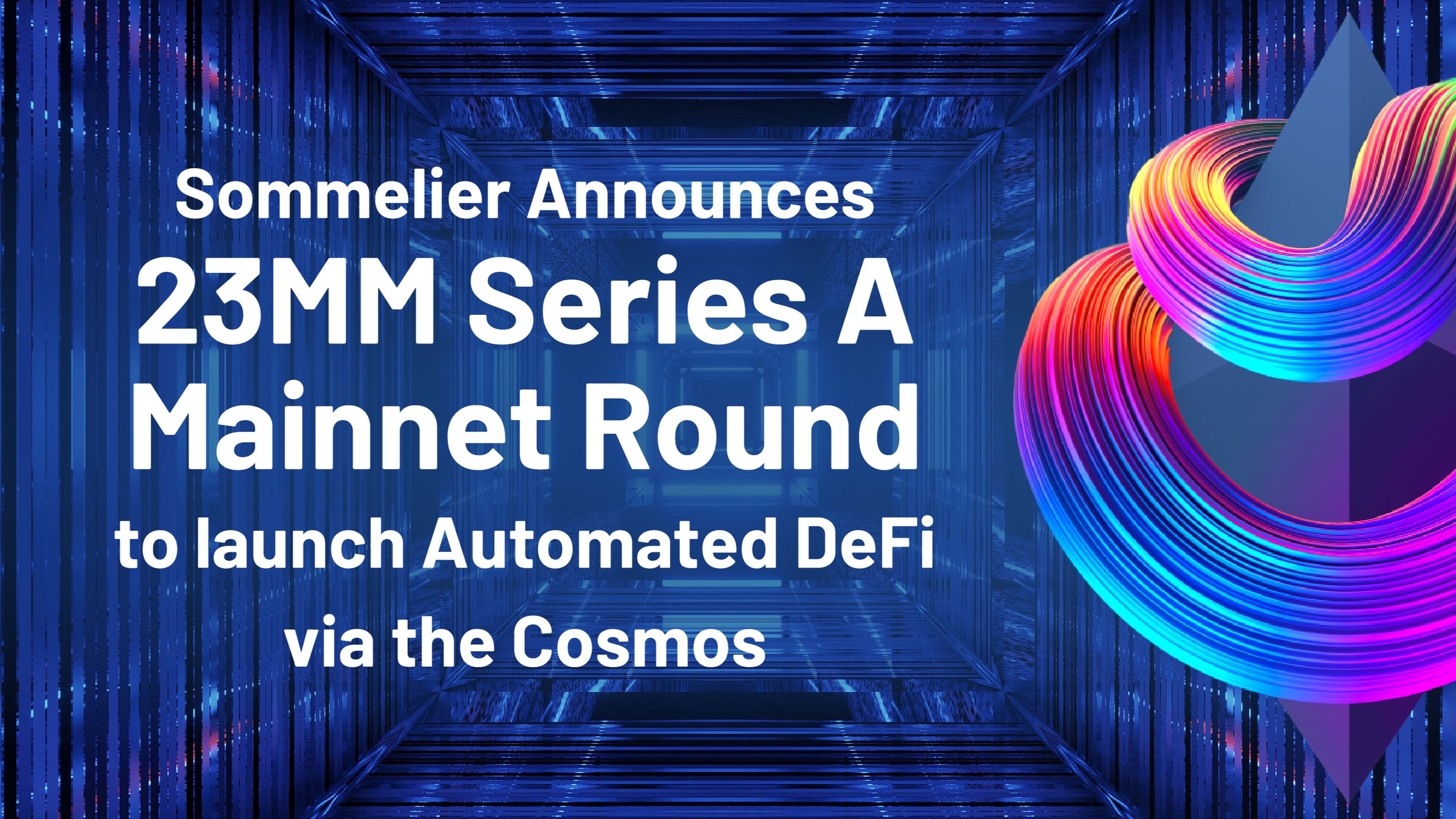
Sommelier Announces 23MM Series A Mainnet Round to launch Automated DeFi via the Cosmos
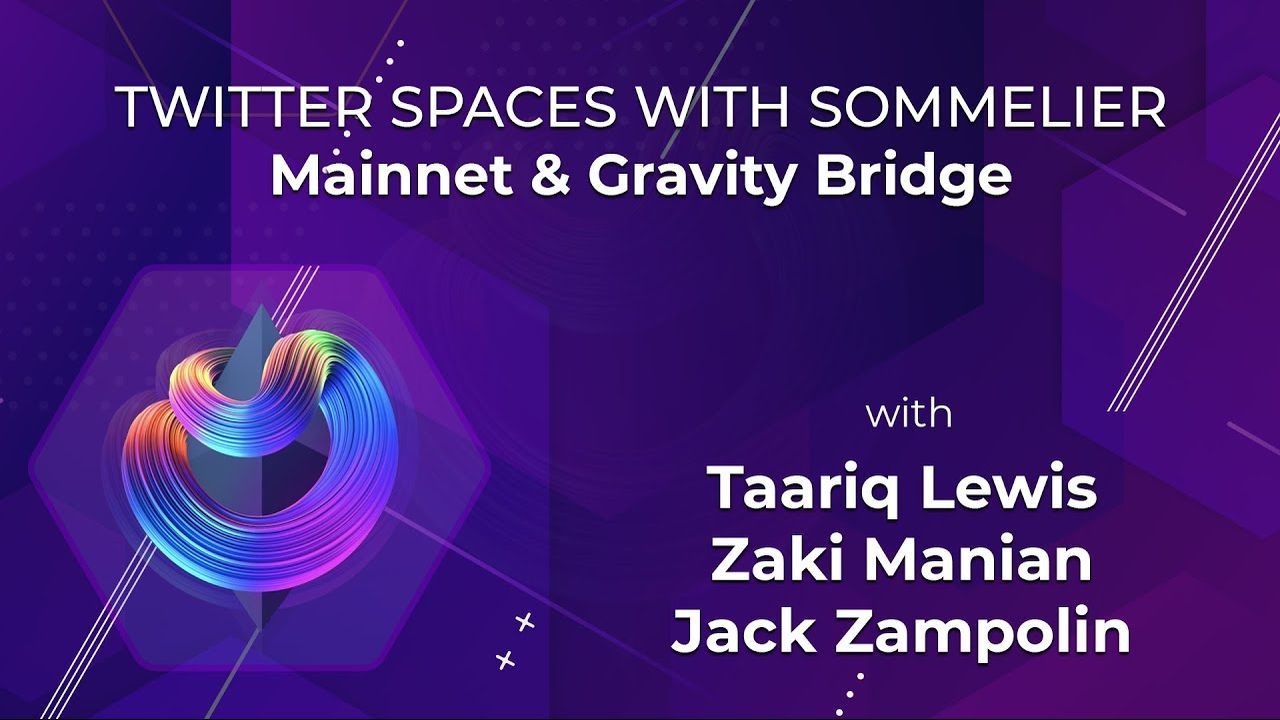
Twitter Spaces With Sommelier: Mainnet Launch & Gravity Bridge
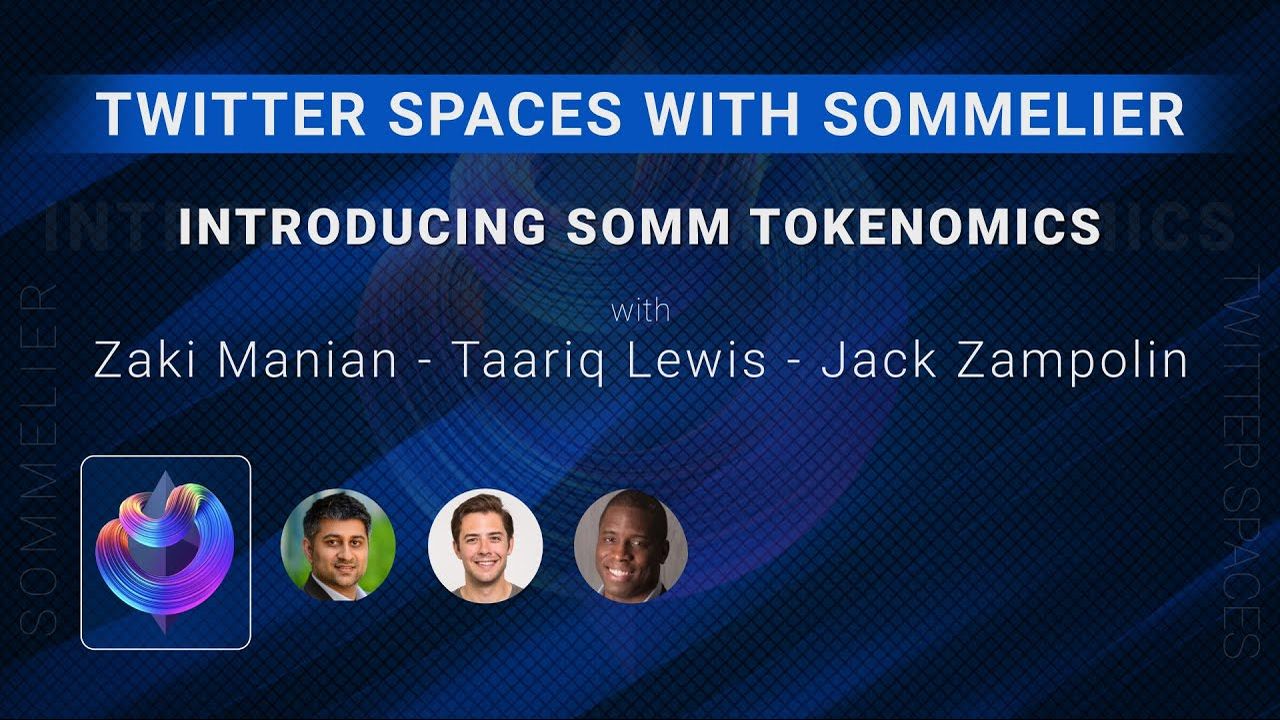
Twitter Spaces With Sommelier: Introducing SOMM Tokenomics

Twitter Spaces With Sommelier: Mysten Labs AMA With Evan Cheng

Introducing SIPS and Sommelier’s Governance Structure

Twitter Spaces With Sommelier: End of Year AMA 2021

Twitter Spaces With Sommelier: Intro to SIPS & Lisbon Blockchain Week
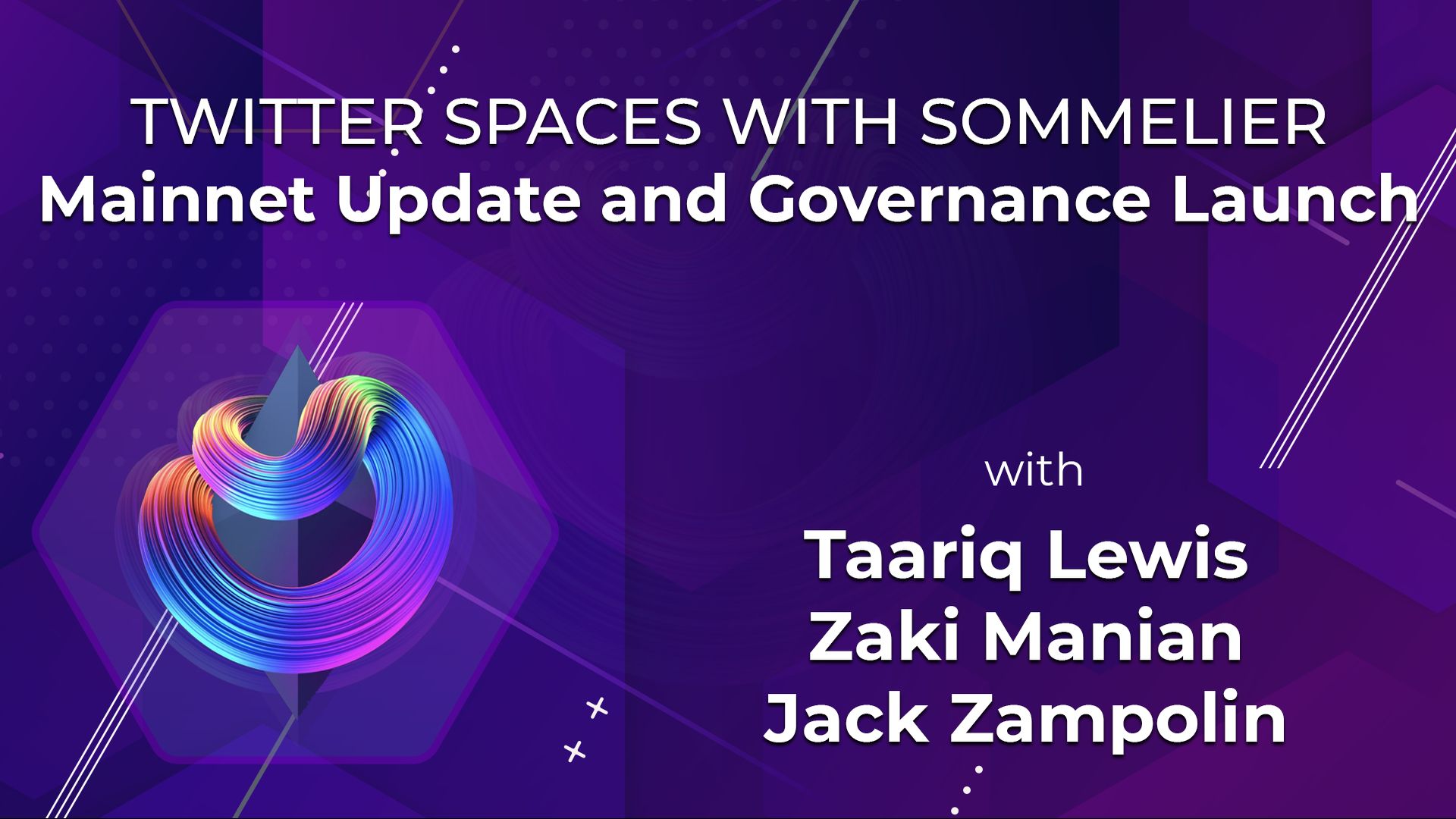
Twitter Spaces With the Sommeliers: Mainnet Update and Governance Launch

Sommelier Partners With Mysten Labs to Make Sommelier and All Cosmos Blockchains the Fastest Protocols on the Planet
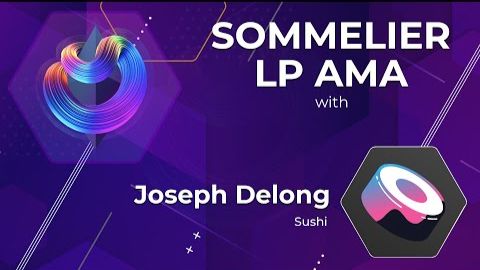
Twitter Spaces With the Sommeliers: Sushi AMA With Joseph Delong
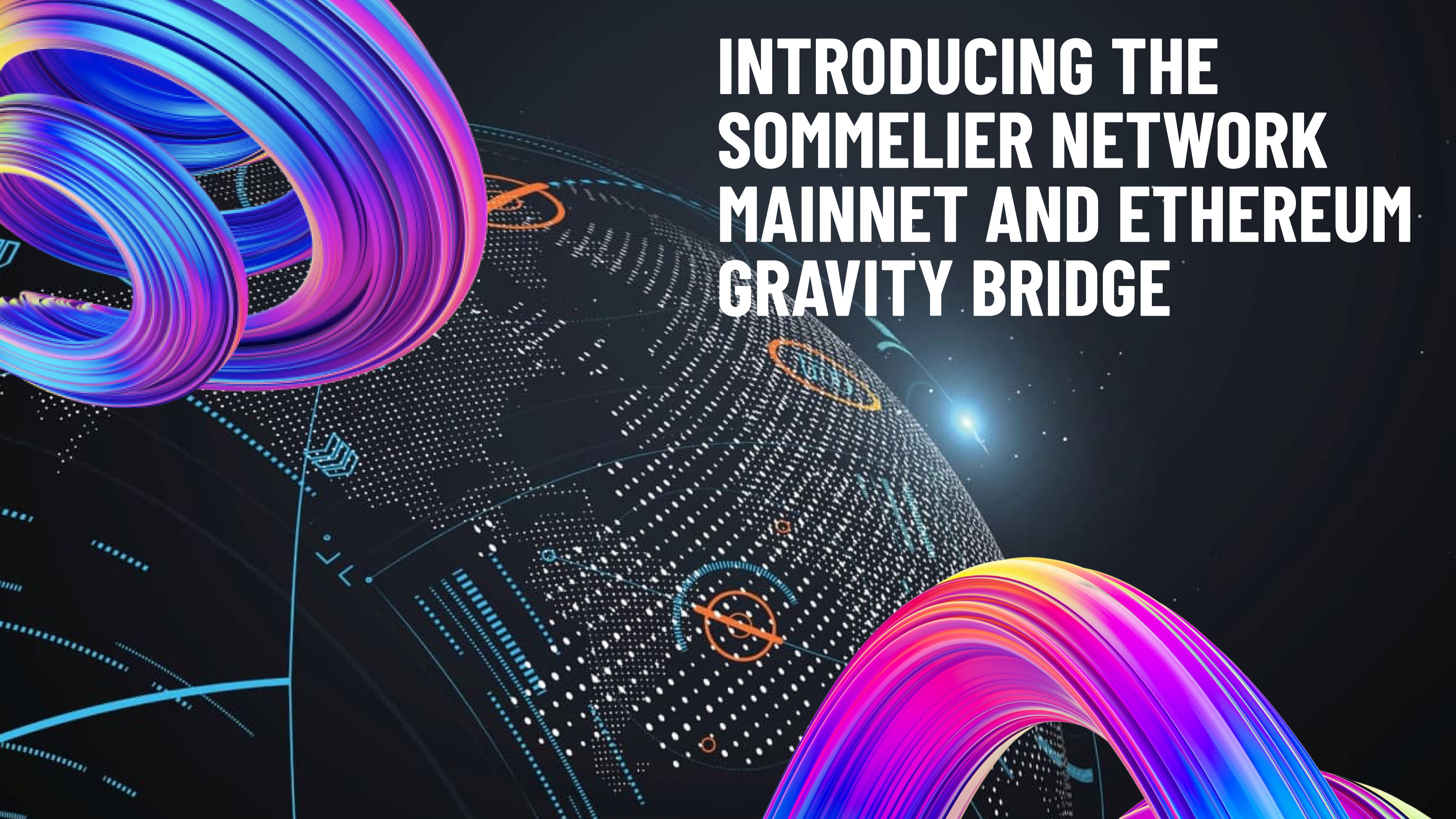
Introducing the Sommelier Network Mainnet and Ethereum Gravity Bridge
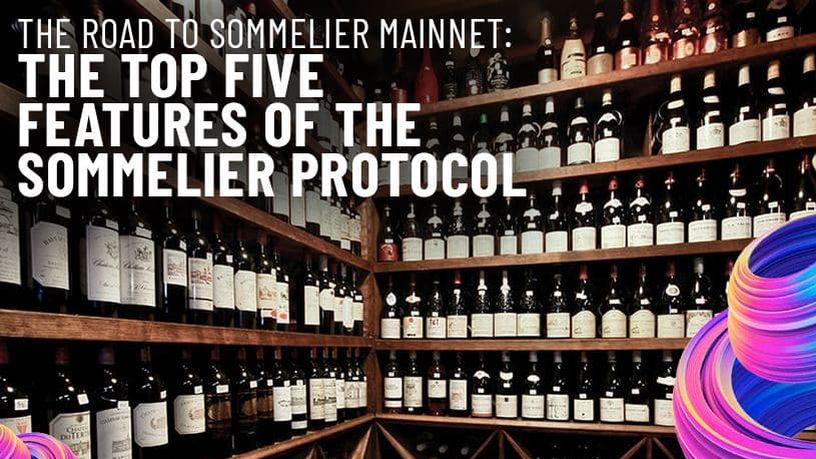
The Top Five Features of the Sommelier Protocol

Call for Validators: The Two Step Process for 2021

Two New Features Launched to Test Liquidity Management on Uniswap v3

Uniswap v3 Remove Smart Contract Incident Post Mortem for Sommelier
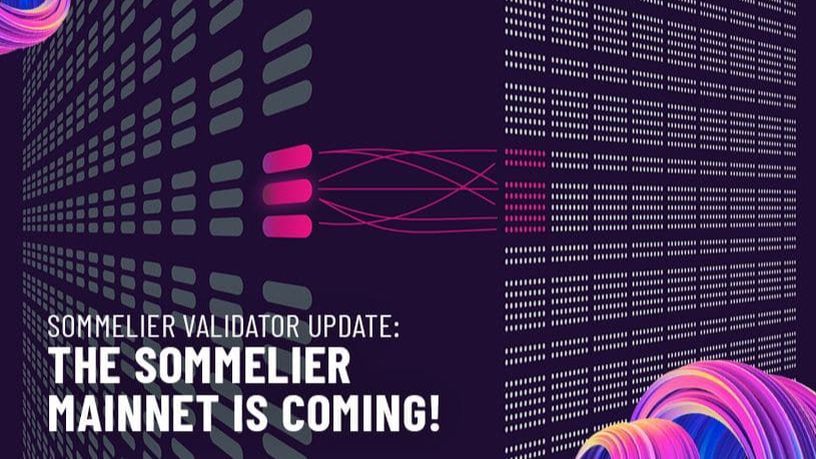
Call for Validators: Road to Sommelier Mainnet
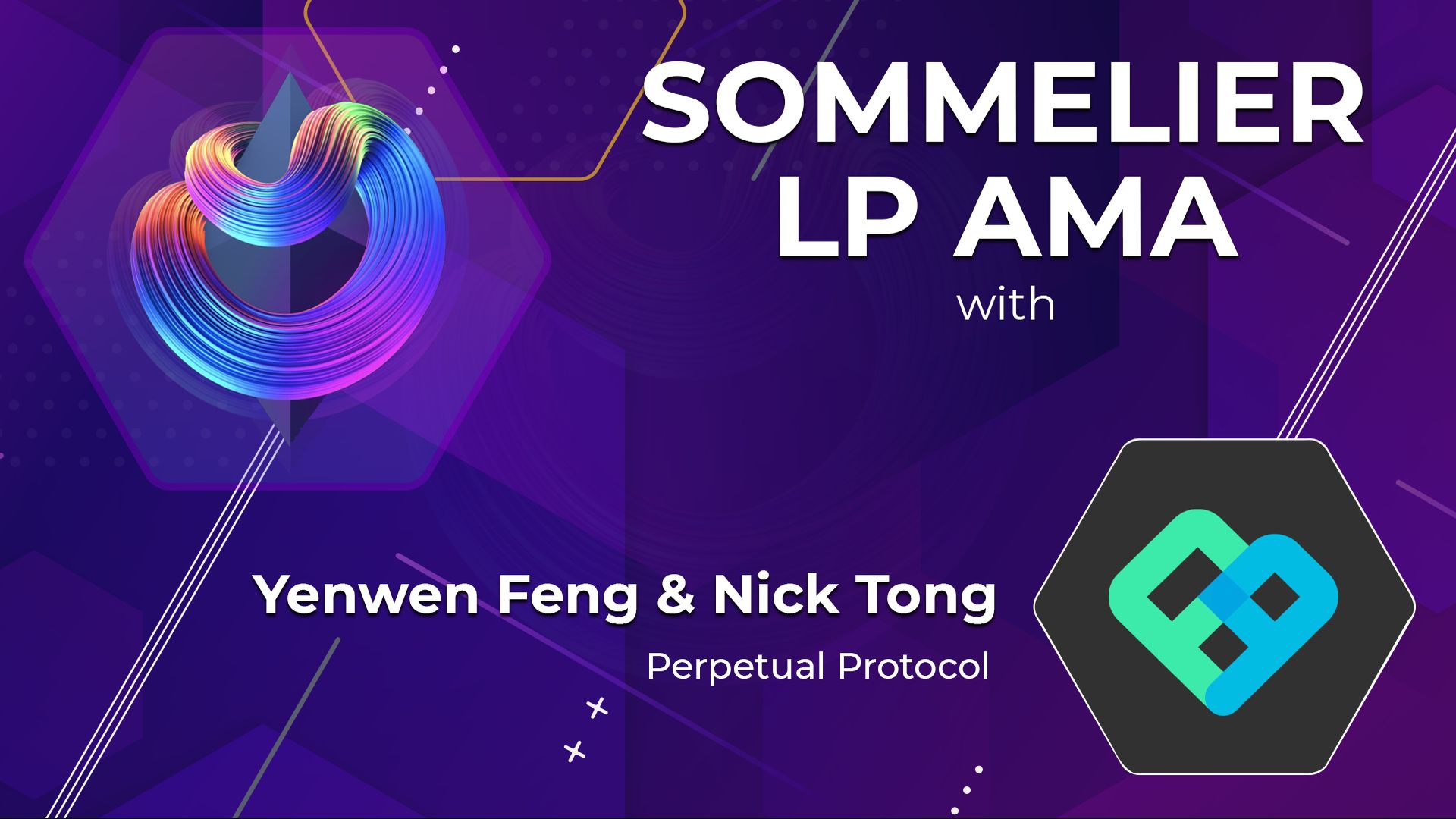
Sommelier Liquidity AMA With Yenwen and Nick From Perpetual Protocol
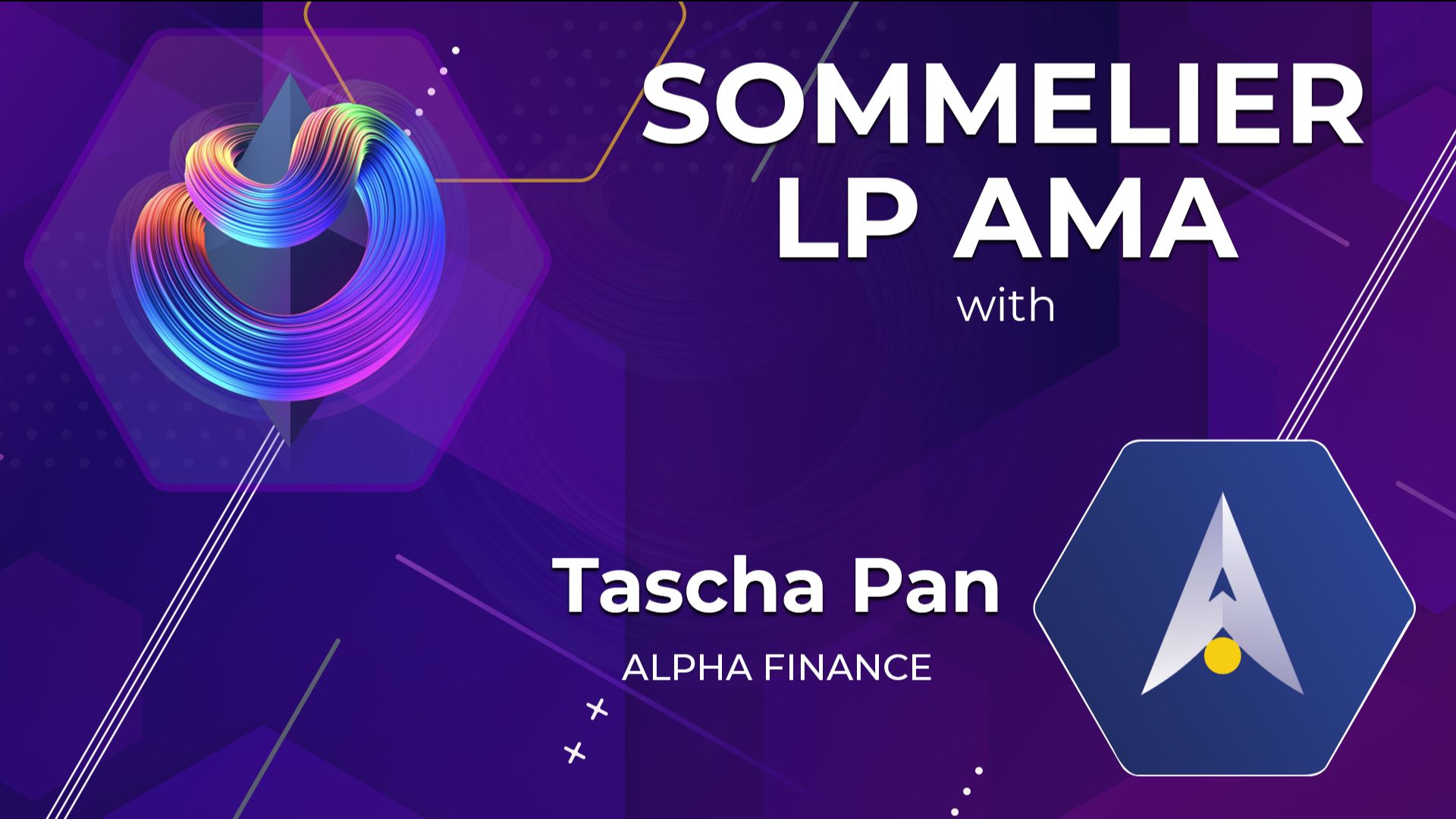
Sommelier Liquidity AMA With Tascha Pan From Alpha Finance
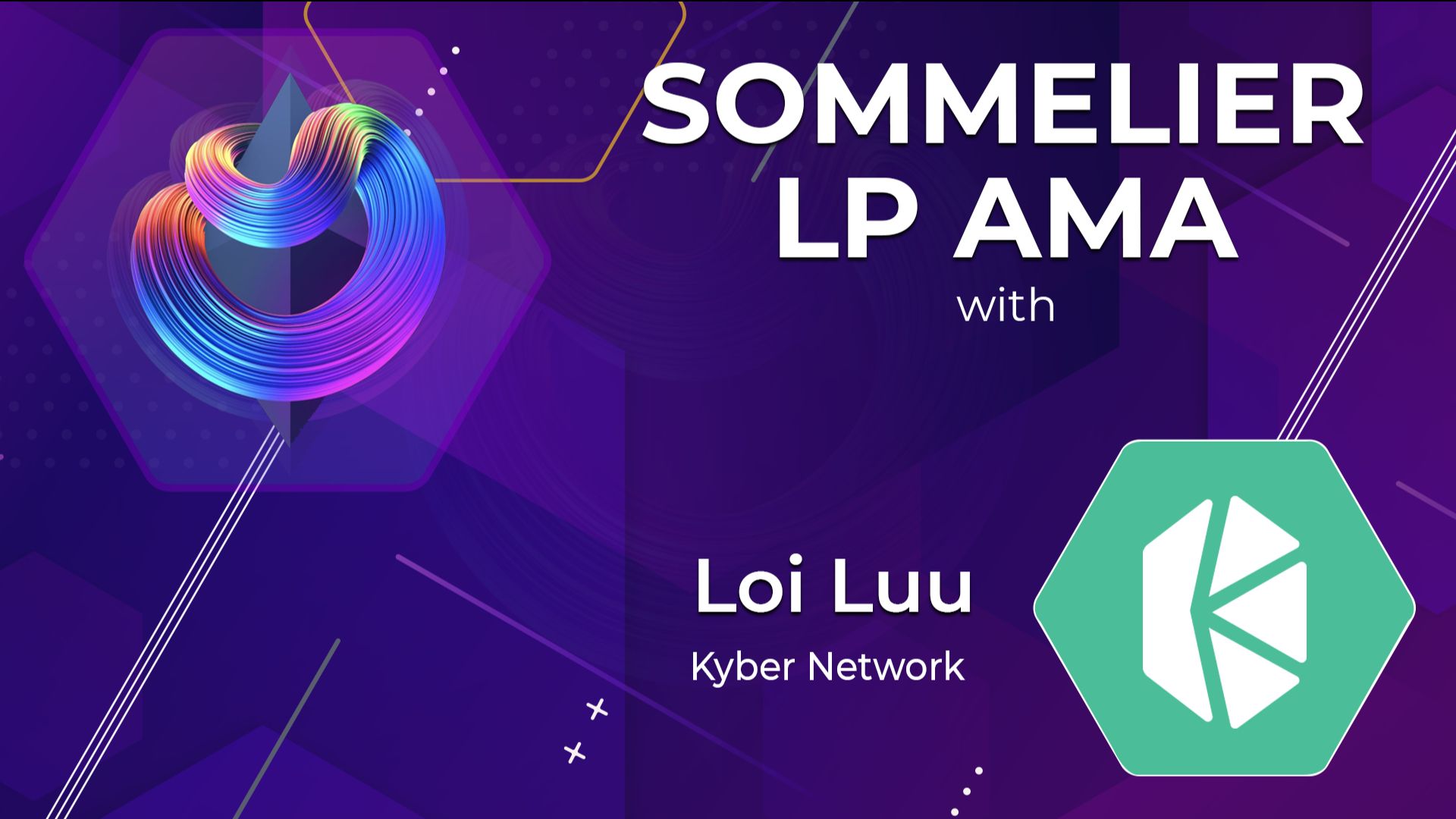
Sommelier Liquidity AMA With Loi Luu From Kyber Network

Sommelier Liquidity AMA With Alex From Peanut
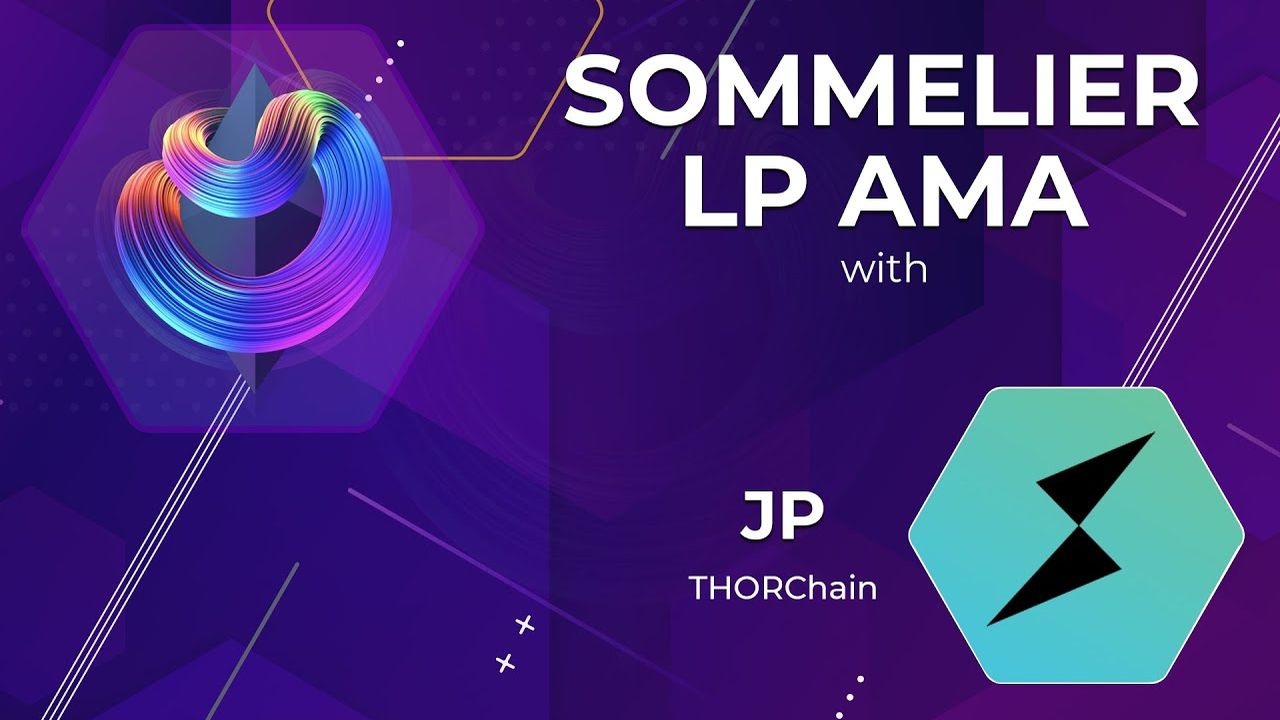
Sommelier Liquidity AMA With JP From THORChain

Sommelier Liquidity AMA With Alan Chiu From OMGX Network

Sommelier Liquidity AMA With Ari From Gelato Network
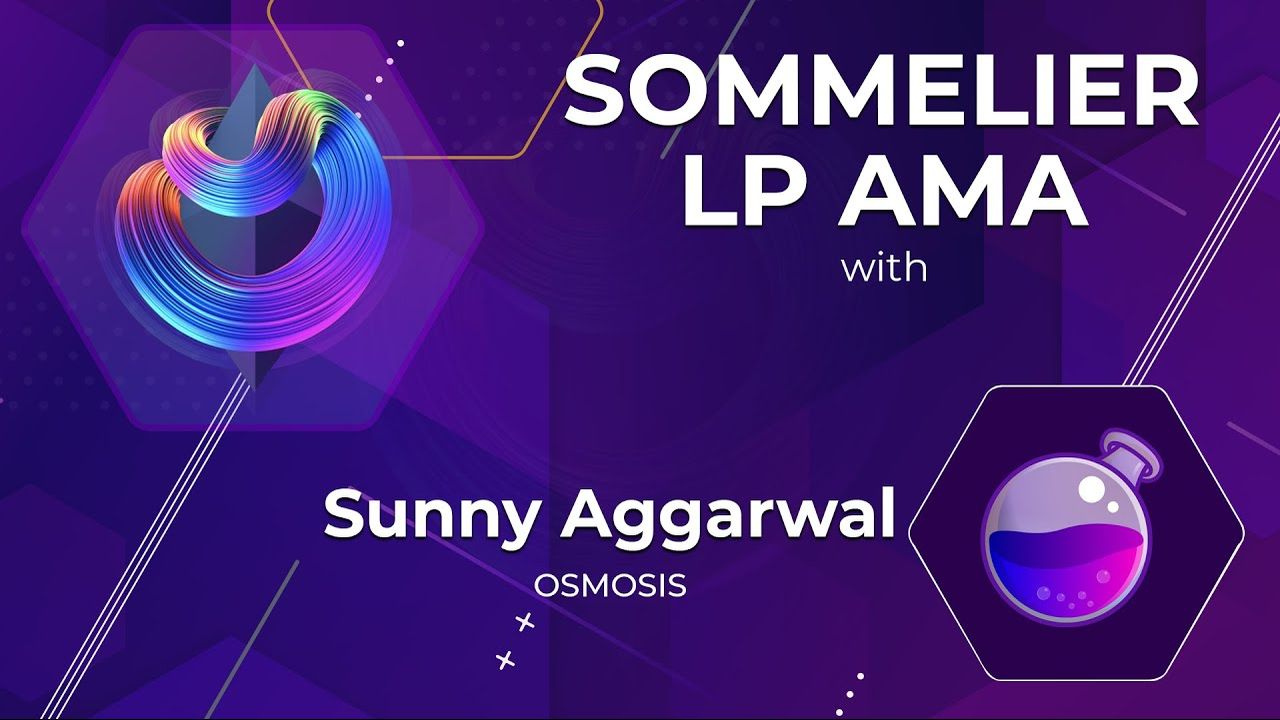
Sommelier Liquidity AMA With Sunny Aggarwal From Osmosis
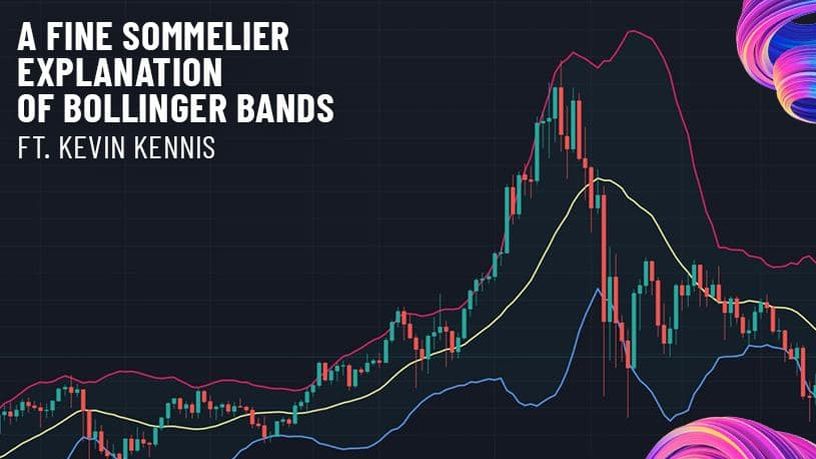
A Fine Sommelier Explanation of Bollinger Bands With Kevin Kennis

Sommelier Liquidity AMA With Mona El Isa From Enzyme

Sommelier Liquidity AMA With Haxor From Method Finance
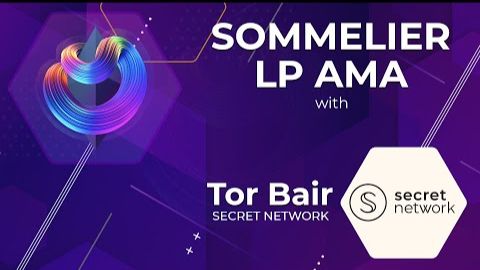
Sommelier Liquidity AMA With Tor From Secret Network
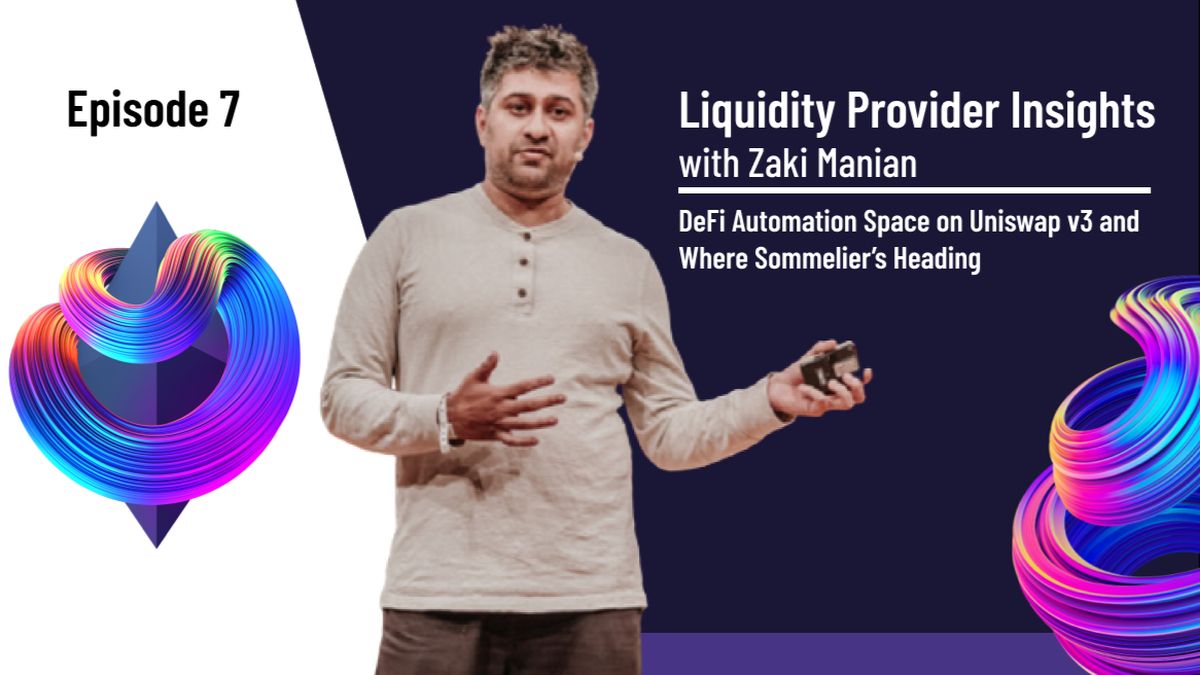
Liquidity Provider Insights With Zaki Manian - Ep. 7 - DeFi Automation Space on Uniswap v3 and Where Sommelier’s Heading

Sommelier Liquidity AMA With Geralt From CyberFi

A Pairings Tutorial of Two Sided Liquidity Addition with Sommelier
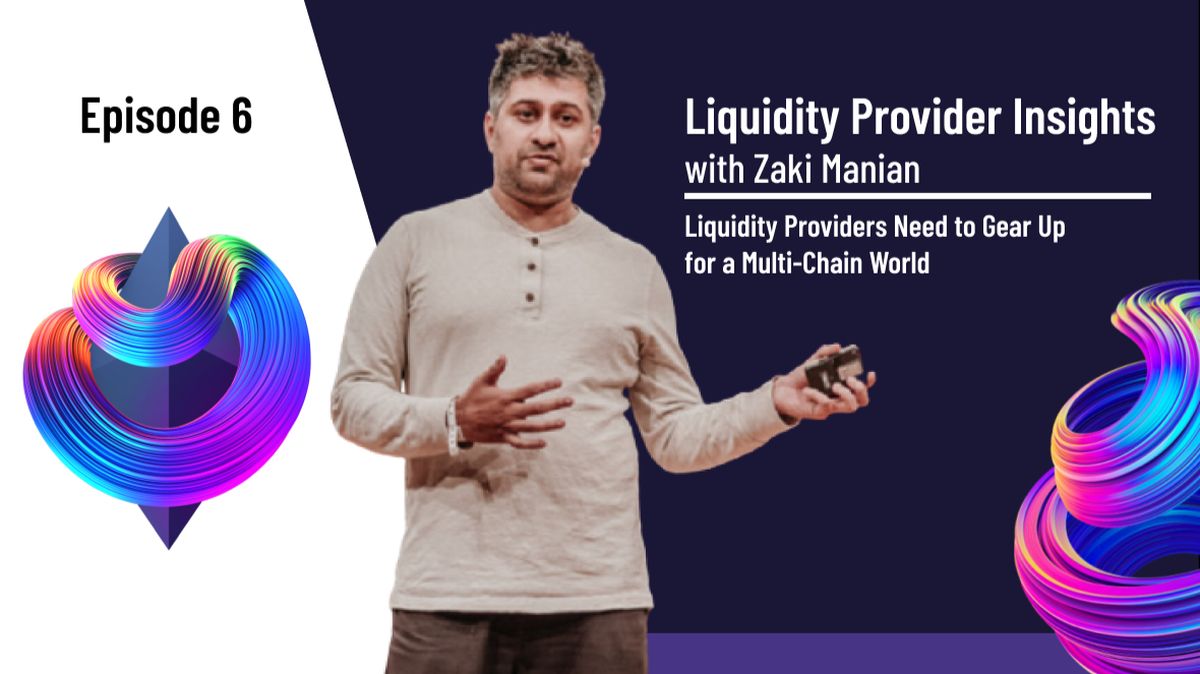
Liquidity Provider Insights with Zaki Manian - Ep. 6 - Liquidity Providers Need to Gear Up for a Multi-Chain World

Three New Summer Features for Liquidity Providers

Sommelier Liquidity AMA with Tom C and Max W from Charm

Sommelier Liquidity AMA with Dereek69 & Shalaquiana from BIOPset

Sommelier This Week - June 3rd 2021: The Road to Mainnet
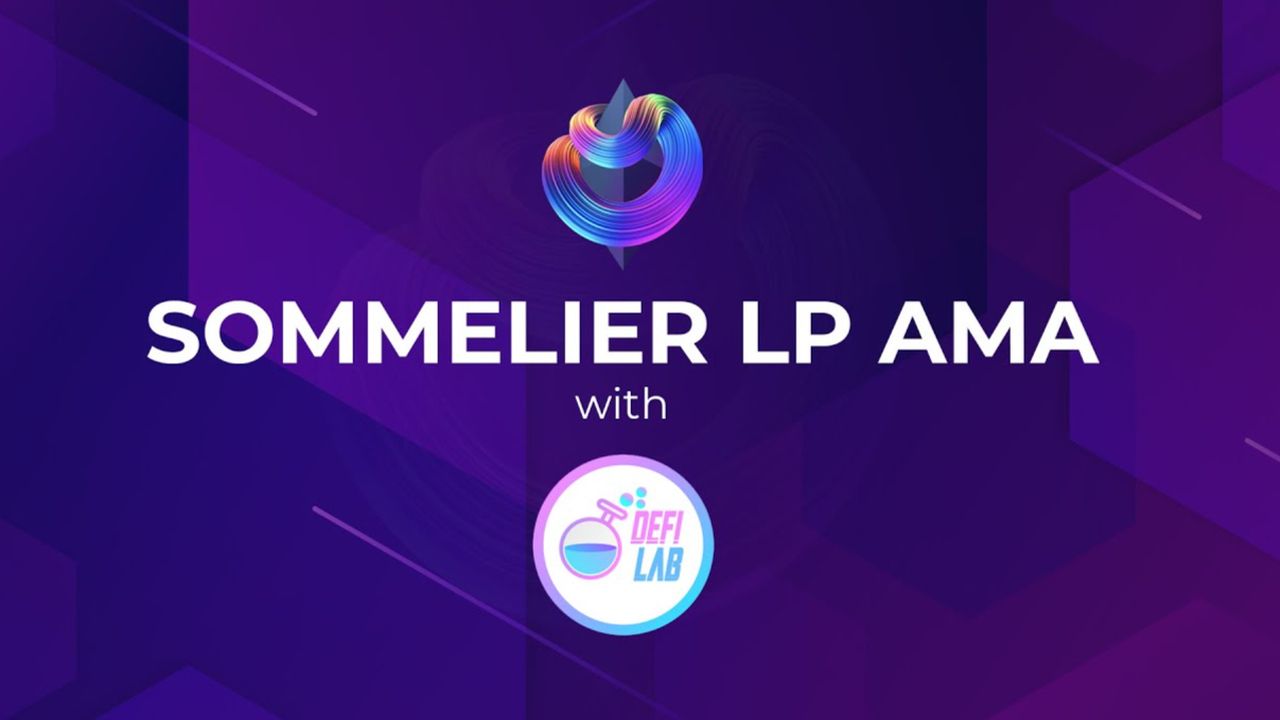
Sommelier Liquidity AMA with Federico Landini from DefiLab

Sommelier Liquidity AMA with Michael Egorov from Curve
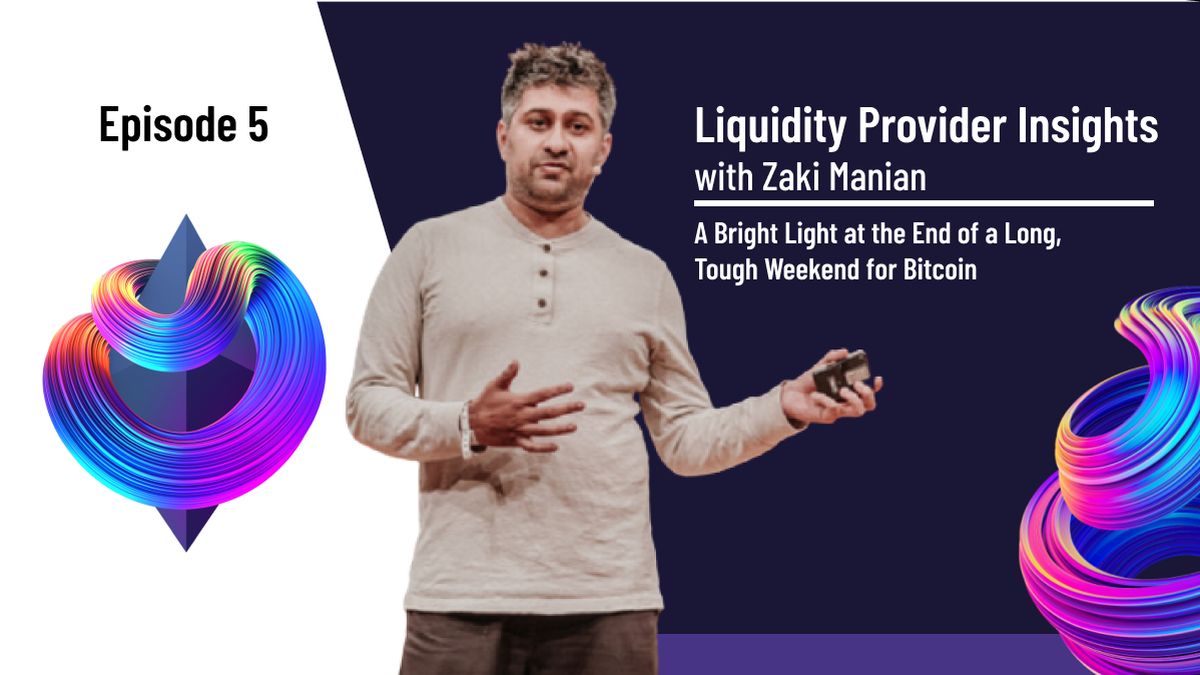
Liquidity Provider Insights with Zaki Manian - Ep. 5 - A Bright Light at the End of a Long, Tough Weekend for Bitcoin

Sommelier This Week - May 27th 2021: What Aspiring Sommelier Validators Need to Know on Last Week’s Protocol and App Progress
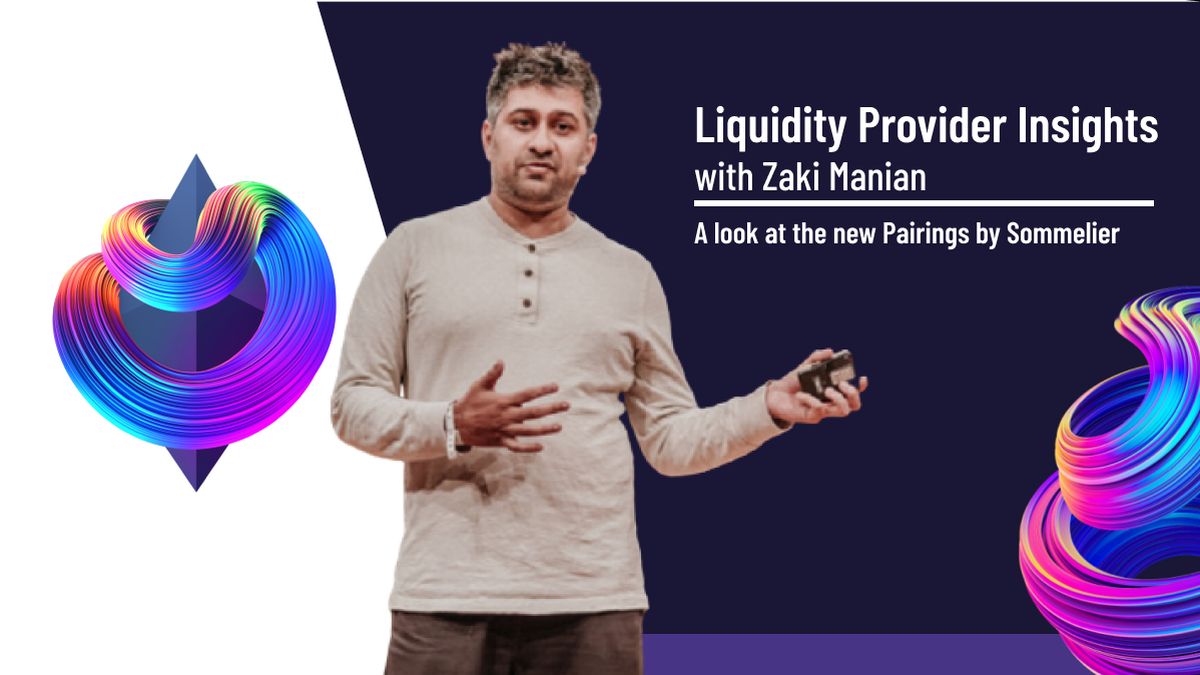
Liquidity Provider Insights with Zaki Manian (Special Edition) - Ep. 4 - New Pairings Release

Sommelier R&D AMA With Yaniv Tal From the Graph

Sommelier Liquidity AMA with MacLane Wilkison from NuCypher

The Eight Steps to Become a Liquidity Provider with Pairings

Sommelier NFT Awards - May 18th, 2021
Pairings By Sommelier: The FAQ

Zaki Manian Breaks Down What Liquidity Providers Need to Know Under Uniswap v3

Sommelier This Week - May 6th 2021: How This Week’s Protocol and App Progress Weaves Together to Make a Product
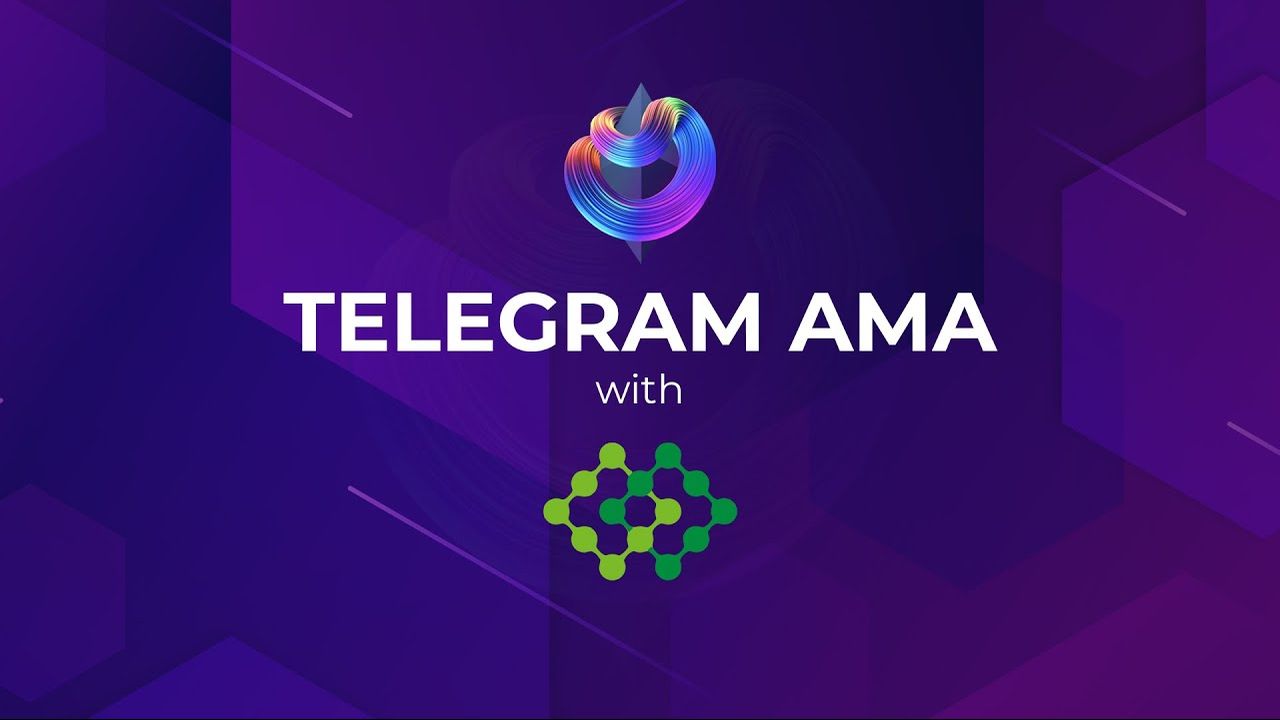
Sommelier Liquidity AMA with Dan Thomson from InsurAce

Sommelier This Week - April 29th 2021: Weeks Away From a Taste of the Sommelier App Experience and How the Dev Team Stays on Track
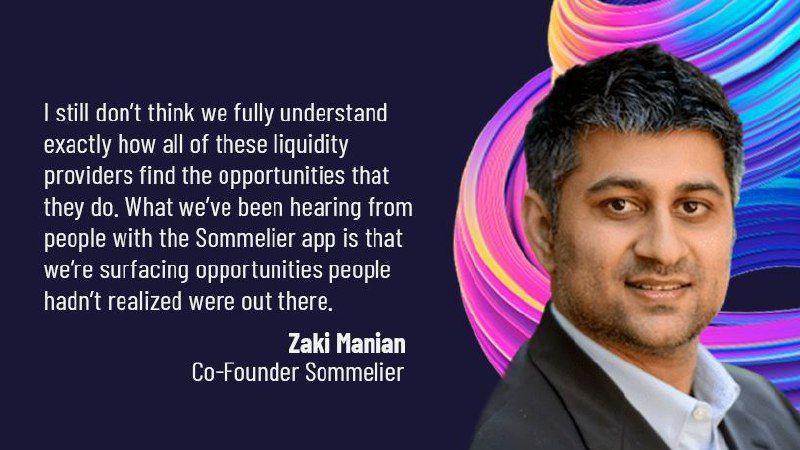
Zaki Manian Breaks Down a Phase Change Liquidity Providers Need to Know About Automated Market Makers

Introducing Jehan Tremback: Sommelier Core Developer and Althea Co-Founder that pushes the Limits of the Blockchain Bridge with Gravity

Sommelier This Week - April 22nd 2021: An Inside Look at Progress on Coordinating Sommelier Components That Contribute to the Chain

Sommelier This Week - April 15th 2021: Providing a Best-in-Class Experience for Uniswap Liquidity Providers

Sommelier Announces $1M R&D Grant from The Graph Foundation

Introducing LP Rewards: This Week With Cellframe
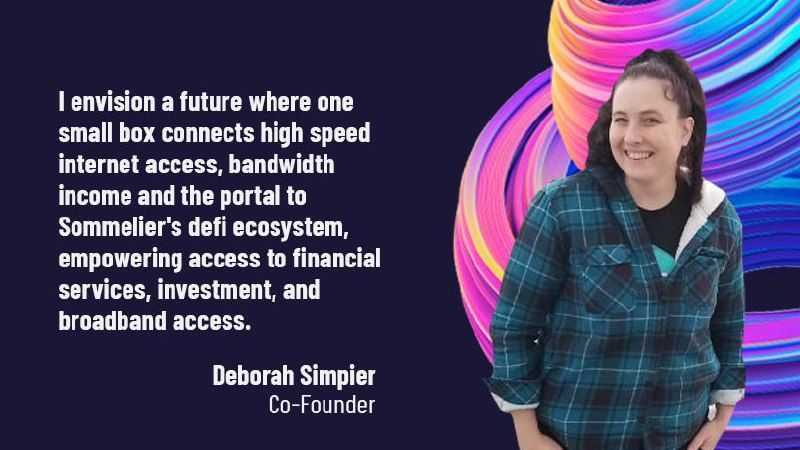
Introducing Deborah Simpier: Althea CEO and Sommelier Co-Founder Who Brought the Gravity Bridge to Life in The Cosmos

Sommelier This Week - April 8th 2021: What Uniswap v3 Means For Sommelier Architecture and Validators

Introducing Sommelier LP Rewards Program

Sommelier This Week - April 1st 2021: Gravity Bridge and Private Testnets

Blockchain startup decides to acquire a California winery and host NFT wine parties
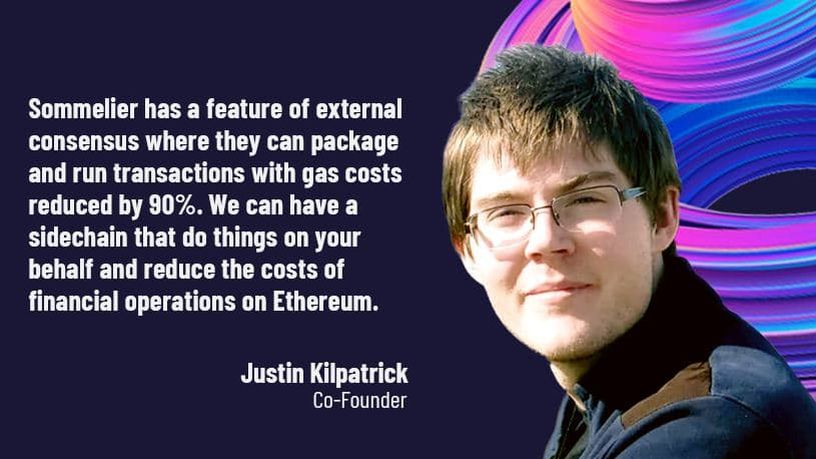
Introducing Justin Kilpatrick: The Blockchain Bridge Wizard Who Maintains Gravity

Five Ways UniswapV3 changes the world for Liquidity Providers on the AMM
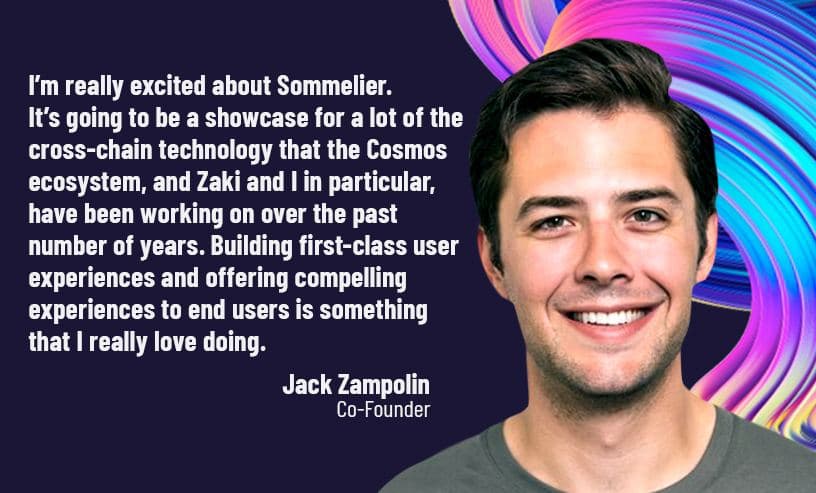
Introducing Jack Zampolin: On Becoming A Sommelier in The Cosmos
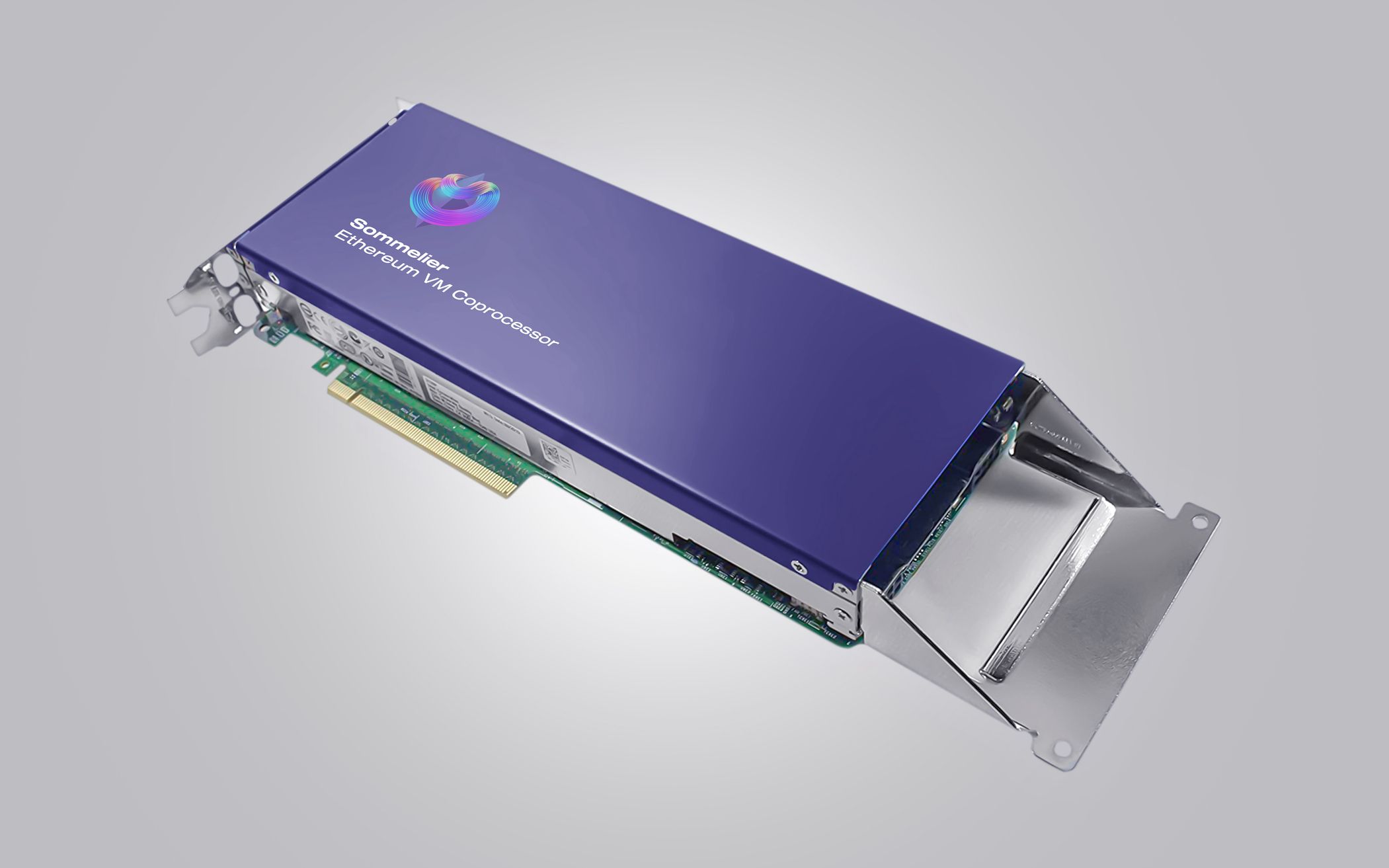
Sommelier: Welcome To The New CoProcessor For Ethereum
© 2025 Somm by Bajanss OÜ –Maakri 36-50, Tallinn, Estonia 10145